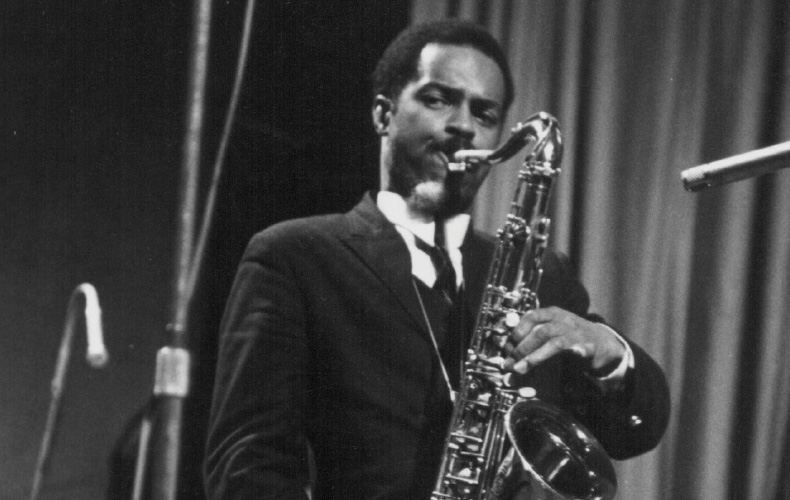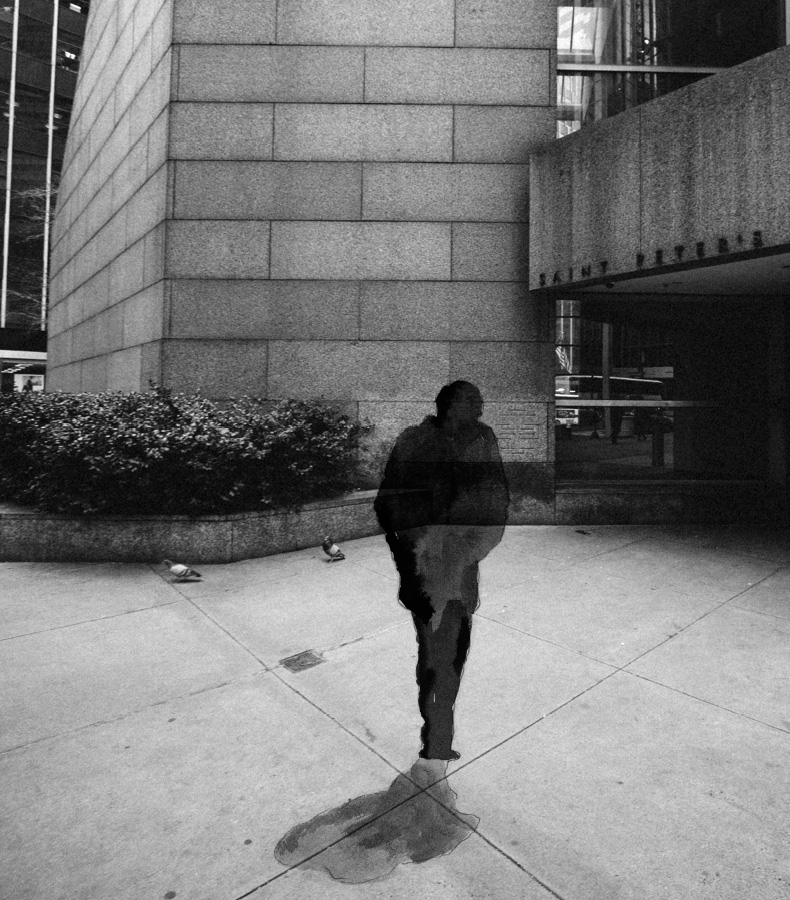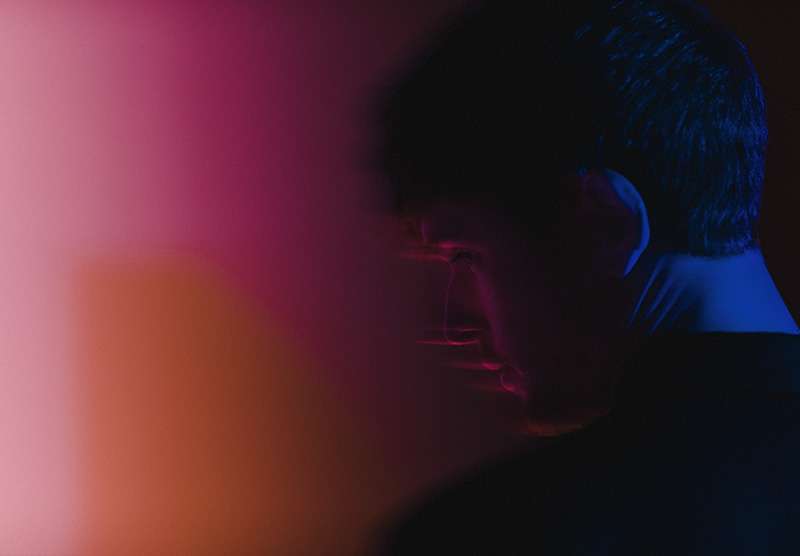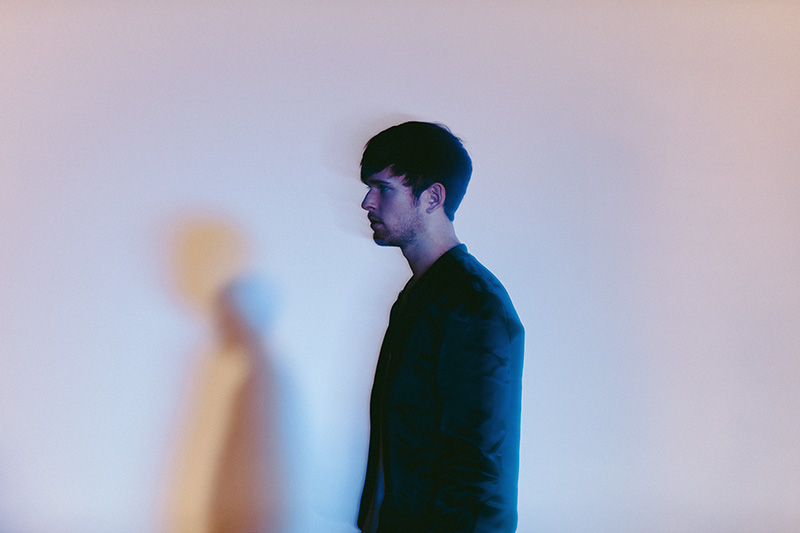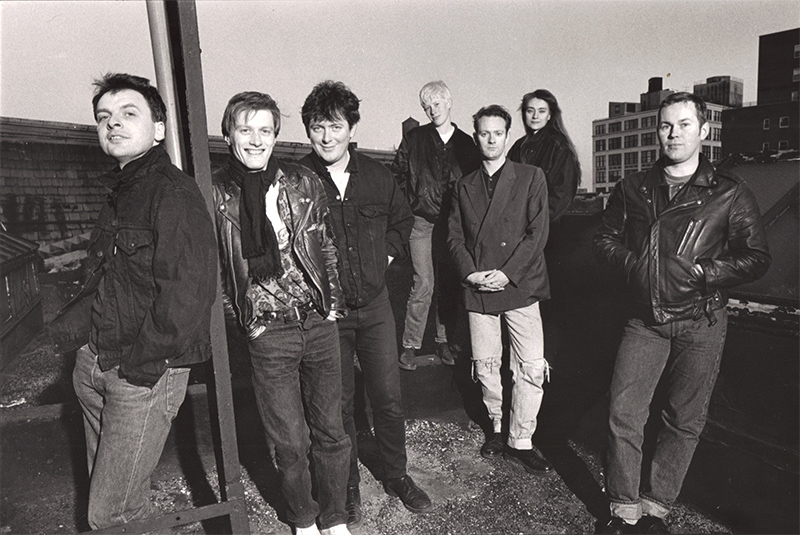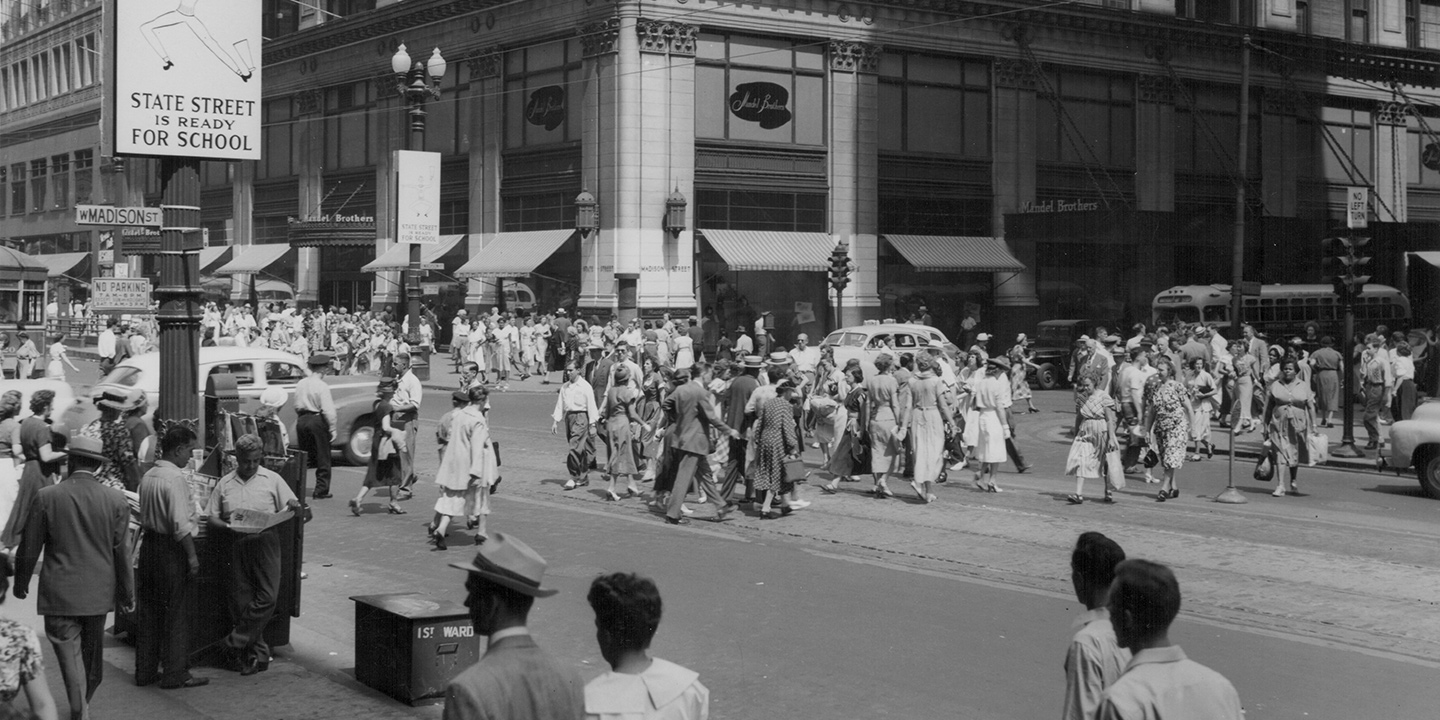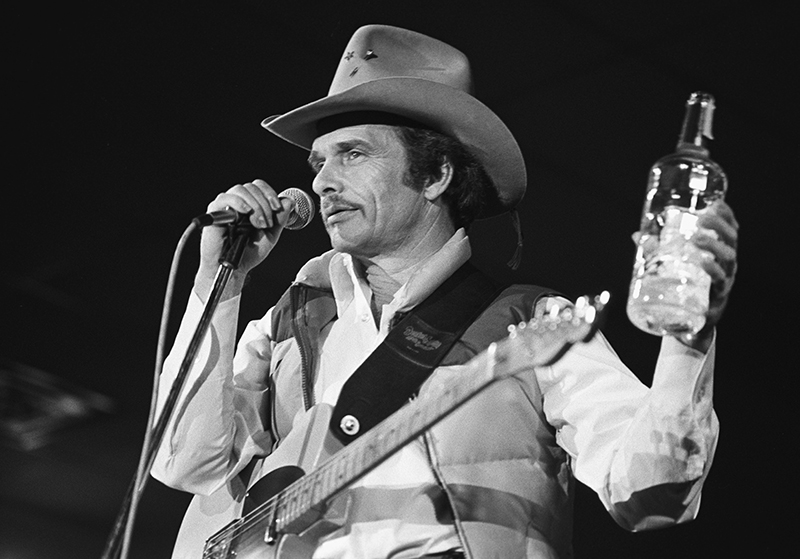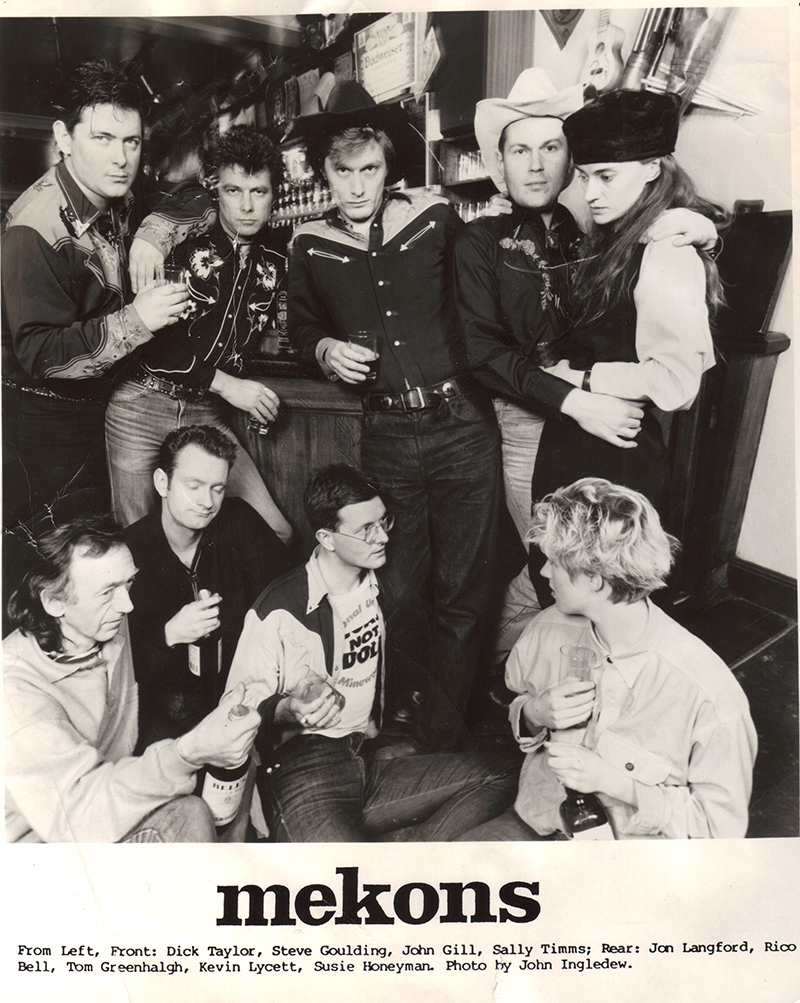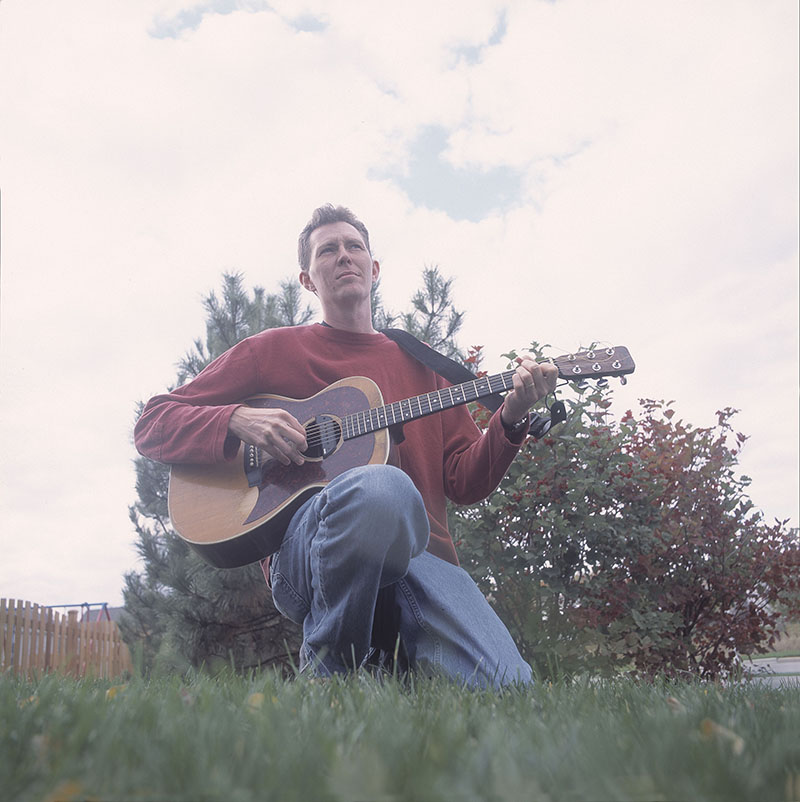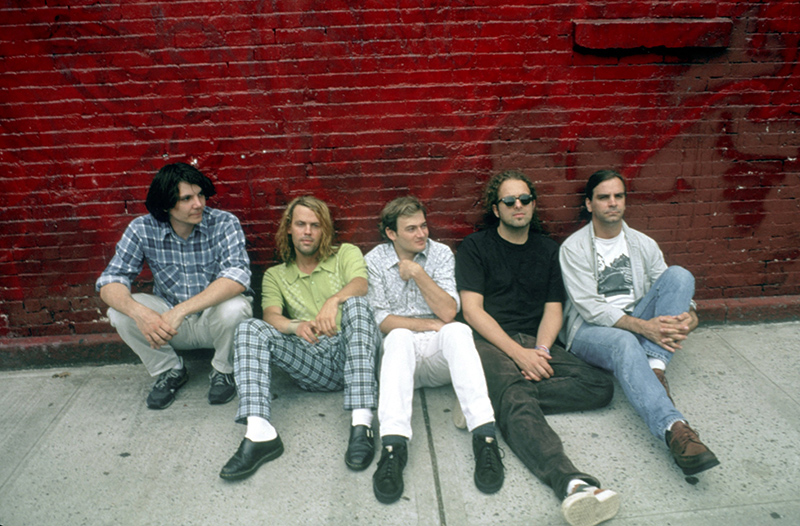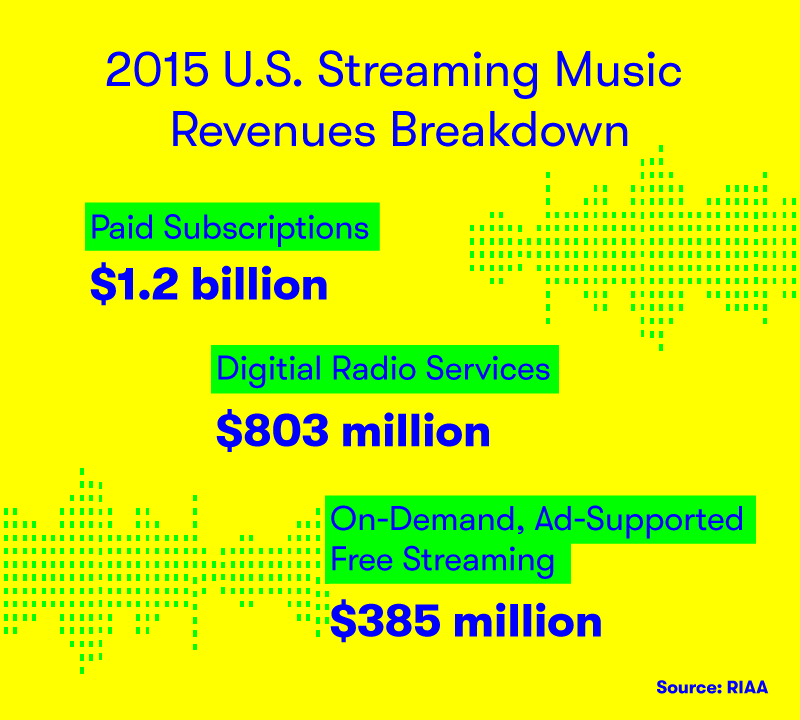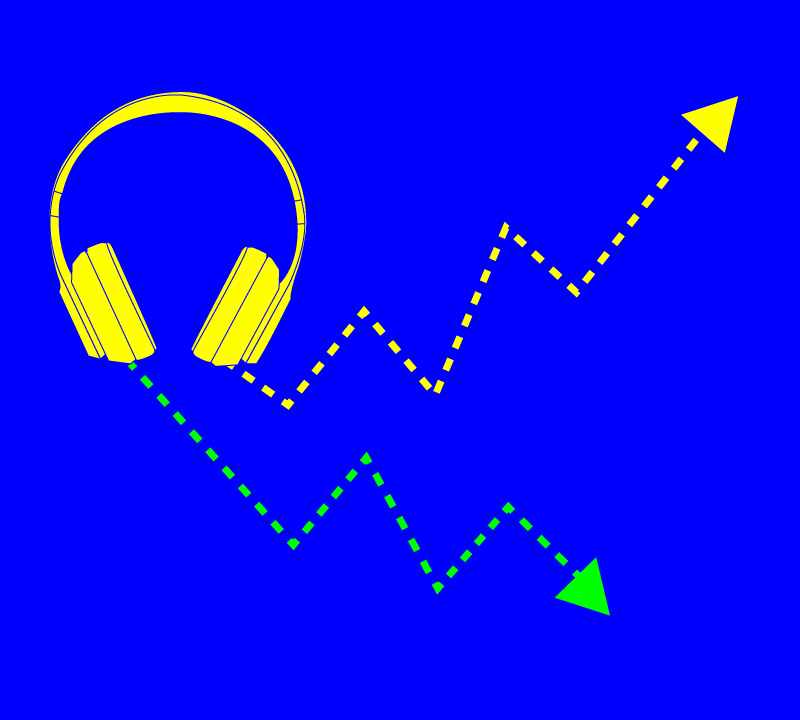
Longform: How Prince’s Androgynous Genius Changed the Way We Think About Music and Gender
Photo Gallery: Coachella 2016: Pitchfork Radio in Palm Springs

Greil Marcus' Real Life Rock Top 10: Further Reports on the Trump Soundtrack

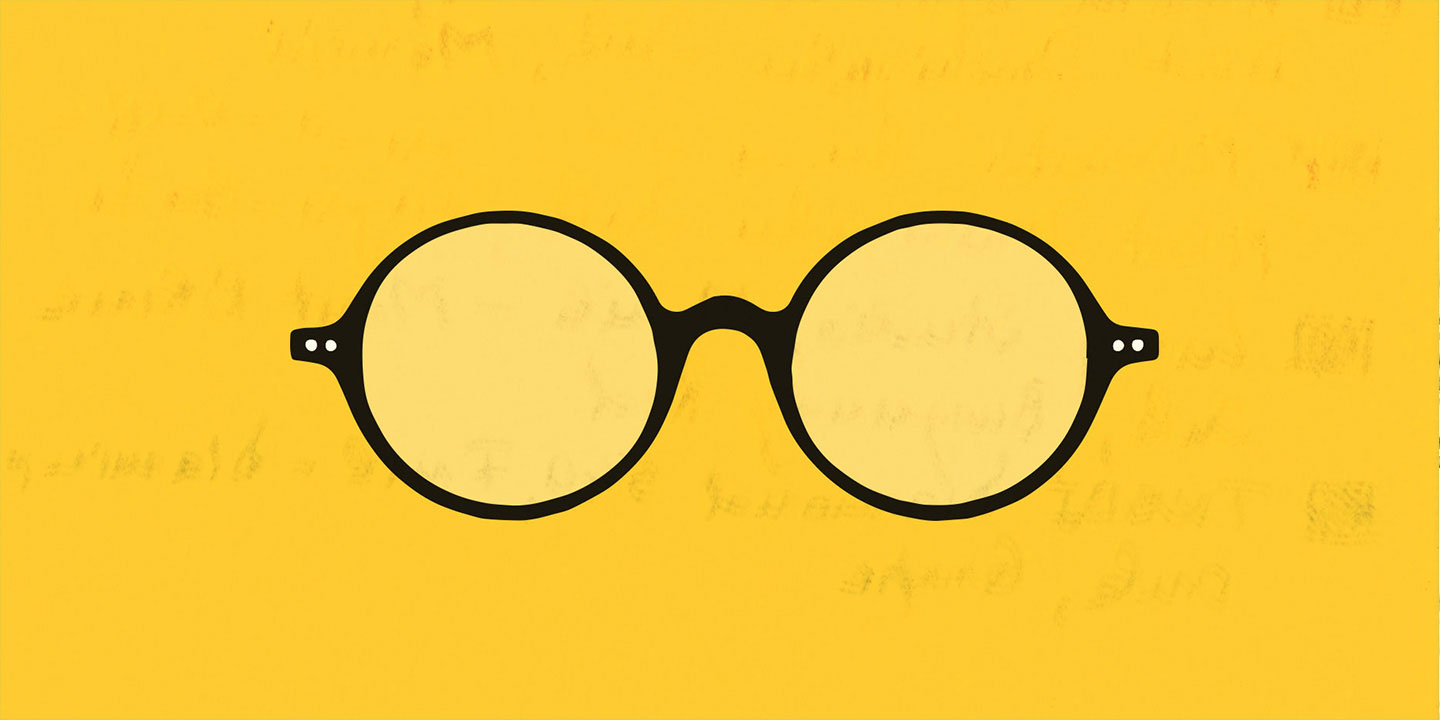
1. My friend Jo Anne Fordham writes in from Jackson, Mississippi, on April 6:“At 15, I saw Mick Jagger at Altamont. I was leaving as city kids lit evening fires in dry grass almost always visited by high winds. As soon as I saw Jagger's face, I knew I was far tougher. Not so, Merle. Never. RIP.”
2. Ensemble Mik Nawooj, The Future of Hip Hop (miknawooj.com) This Bay Area orchestra—guided by pianist JooWan Kim, with MCs Do D.A.T and Sandman, operatic soprano Anne Hepburn Smith, cellist Lewis Patzner, violinist Mia Bella D’Augelli, flautist Bethanne Walker, clarinetist James Pytko, stand-up electric bassist Eugene Theriault, and drummer Lyman Alexander II, with Christopher Nicholas on choruses—play with an elegant severity, which can break up into a back and forth between Do D.A.T. and Sandman that makes you forget the band until they throw the music back to the players like a second baseman completing a double play to first. Behind a music stand, Smith opens her mouth and as high, clear, swirling sounds come out, she makes you realize how much room there is in hip-hop—sonic room, conceptual room—that it’s a language that after more than 40 years remains in flux. The textures swimming through the sound are like the world’s fastest ping-pong game: they can make you dizzy, trying to hear and see everything at once, and you do. They make the Kronos Quartet, perhaps as much a model as Prince’s “When Doves Cry” band or the Roots, feel like they’re afraid of their own voice. No one seems capable of hitting a predictable note.
Ensemble Mik Nawooj: "Last Donut" (via SoundCloud)
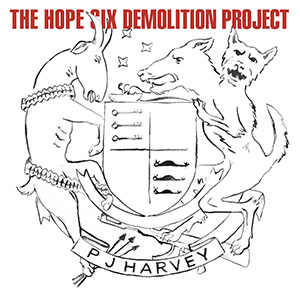
3. PJ Harvey, The Hope Six Demolition Project (Island) This album may be about the collapse of the world, soulless capitalism, imperialism, and speaking truth to power—songs, or maybe more fully song titles, include “The Ministry of Social Affairs,” “River Anacostia,” and “Near the Memorials to Vietnam and Lincoln”—but clunky choruses and sing-songy rhythms make it plain that good intentions are not music. An attempt to ground ethereal singing—it all but screams not merely good but pure intentions—in a darker, slowly chanted “Wade in the Water” feels cheap. This album says everything it means to say in the profoundly discordant saxophone Harvey plays in “Ministry of Defence”—the sound she makes, huge plates of metal bending and scraping against each other, doesn’t last long, but the break it makes in the music echoes through the songs that follow, most often an echo of where they fall short. And when you go back to it, to try to feel how the sound was made, how it works, you can feel it: the collapse of the world.
4. William Bell, This Is Where I Live (Stax) Starting with “You Don’t Miss Your Water” in 1961, Bell had many hits on the R&B charts with Stax into the ’70s. This feels like the album he should have made in 1967, but wasn’t ready for: with every smoothly delivered lesson about satisfaction and pain, you sense how hard each one was to learn, and how finding the right words—the right tone of voice to make what you have to say mean anything—is much harder. With the most delicate, modest, contemplative soul guitar: in 1967 it would have been Curtis Mayfield, but it’s producer John Leventhal, who does the same for Rosanne Cash. Can’t Leventhal have Cash and Bell make their next album together?
5. The Rolling Stones, “Midnight Rambler,” from Sticky Fingers expanded edition (Rolling Stones, 1971/2015) A 1971 performance at the Roundhouse in London. On most of the American tour during the fall of 1969, and on Let It Bleed, released just one day before the Altamont finale, the song couldn’t take its shape. As the band played it they hollowed it out. It was there in full on Get Yer Ya-Yas Out! recorded at the end of the tour in New York—but not compared to this, two years later, where near the end Mick Taylor and Keith Richards find a rhythm in the song they’ve never heard before and begin to drive the music for its own sake, taking it right over a cliff. It’s what Richards described as the height of music-making in his Life: “if you're working with the right chord, you can hear this other chord going on behind it, which actually you're not playing. It's there. It defies logic.”
6. & 7. The Rolling Stones, “You Can’t Always Get What You Want” (1969) and Paul Krugman, “Learning from Obama,” The New York Times (April 1) Or, updating the Trump rally staple and why President Obama’s approval ratings have shot up over the spring: “Voters have lately been given a taste of what really bad leaders look like,” Krugman wrote. “I’d like to think that the public is starting to realize how successful the Obama administration has been in addressing America’s problems… Those caught up in the enthusiasms of 2008 feel let down by the prosaic reality of governing in a deeply polarized political system”—even if 10 million jobs have been created, Obamacare is working at a higher level and at a lower cost than predicted by the Congressional Budget Office, significant financial reforms are in place, and major climate protections have been imposed through executive action. “Assuming Democrats hold the presidency, Mr. Obama will emerge as a hugely consequential president—more than Reagan,” Krugman finished up: “The lesson of the Obama years, in other words, is that success doesn’t have to be complete to be very real. You say you want a revolution? Well, you can’t always get what you want—but if you try sometime, you just might find, you get what you need.”
8. The Shangri-Las, “Leader of the Pack” (Red Bird, 1964) Another shot on the Trump rally soundtrack—against the objections of Shangri-Las lead singer Mary Weiss. But really, Trump ought to know the song. He was 18 in New York when the New York group hit the top of the charts. Doesn’t he realize the leader of the pack dies?
9. Rock and Roll Hall of Fame Inductions, Barclays Center, Brooklyn (April 8) For the record: Ice Cube, the day before, in an interview in The New York Times with Joe Coscarelli. Coscarelli: “Gene Simmons, of Kiss, said a few years ago that rappers didn’t belong in the Hall of Fame, because they don’t play guitar or sing.” Ice Cube: “Rock’n’roll is not an instrument and it’s not singing. Rock’n’roll is a spirit. N.W.A is probably more rock’n’roll than a lot of the people that he thinks belong there over hip-hop. We had the same spirit as punk rock, the same as the blues.” Steve Miller, acceptance speech: “At the University of Wisconsin, I was a member of the Student Non-Violent Coordinating Committee. I was a Freedom Rider, and a war protestor.” “I encourage you,” he said at the end of his eloquent eight-minute address, “to keep expanding your vision. To be more inclusive of women. And to be more transparent in your dealing with the public. And to do much more to provide music in our schools.”
Women: the Shangri-Las have never been nominated, let alone inducted. But maybe that’s why Donald Trump doesn’t really know “Leader of the Pack”—they’re losers, and he doesn’t truck with scum.
10. Lonnie Mack, born July 18, 1941, Dearborn County, Indiana-April 21, 2016. Prince, born June 7, 1958, Minneapolis, Minnesota-April 21, 2016. Two guitarists from the Midwest. Who could toll their own bells.
Thanks to Daniel Wolff.
Longform: Blood and Echoes: The Story of Come Out, Steve Reich’s Civil Rights Era Masterpiece
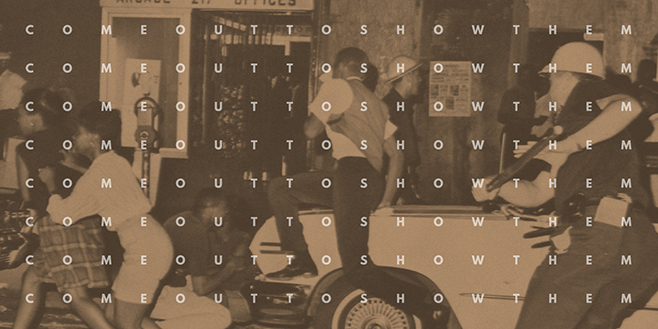
From the Pitchfork Review: New York Is Killing Me: Albert Ayler’s Life and Death in the Jazz Capital

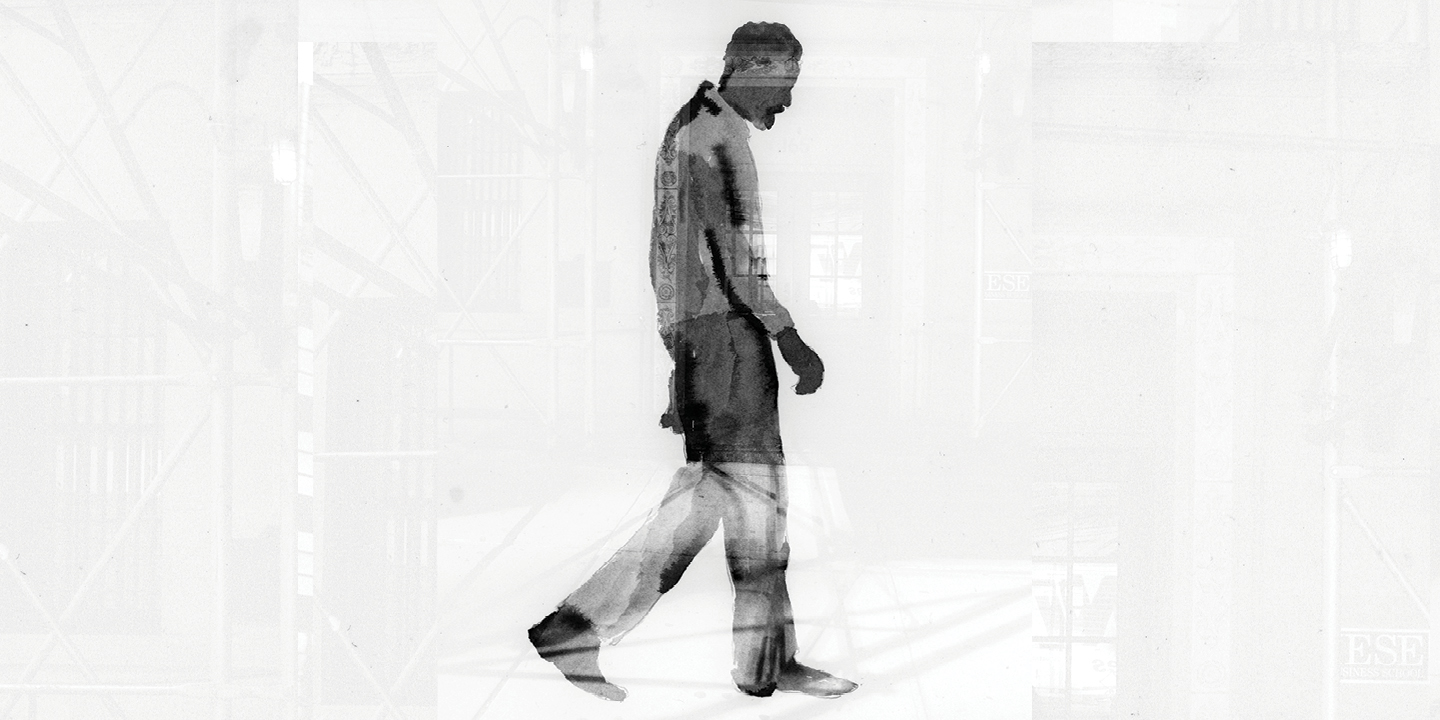
The following story is featured in the latest issue of our print quarterly, The Pitchfork Review. Subscribe to the magazine here.
In the summer of 1963, a tenor saxophonist named Albert Ayler moved into a room in a flat owned by his aunt, across the street from St. Nicholas Park in Harlem. It wasn’t the 27-year-old’s first trip to New York City, but this time he’d come intending to stay. Ayler was heading into the New York jazz epicenter as a complete unknown. It was a tumultuous time for a music in the process of splintering into fragments, building on its storied past but unsure where it would go next. Giants of bebop like Dizzy Gillespie and Thelonious Monk were alive and well and cutting important records (the latter would in another year be on the cover of Time); Miles Davis was in a transitional period, but was on the verge of making some of his finest work, with his second great quintet right around the corner; Charles Mingus was humming at a creative peak, and Duke Ellington had been canonized but was still busy. If you wanted to be someone in jazz during this era, a time when the music still commanded attention, New York, then as now, was the place to be.
But for all the living history and the legends still making rent playing nightclubs and theaters around town, the real story in jazz in 1963 was the “new thing”—free jazz, introduced by Ornette Coleman in 1959 and codified in 1961 with his album bearing the name. By abandoning chords, the harmonic foundation of Western music, free jazz opened up new avenues for improvisation but also suggested the possibility of chaos. As the decade wore on, the sound and style of free jazz was closely identified with the black liberation movement, serving as both a metaphor—culture that breaks free of oppressive structure—and, through its sound, a direct expression of pain, anger, and redemption. The music developed alongside movements in other mediums. The cover of Coleman’s Free Jazz featured a detail from a painting by abstract expressionist Jackson Pollock; the splatter of paint, seemingly random but suggesting a deeper form, mirrored the approach of the musicians. It was the art of the accelerated moment, reflecting the hum and technological bent of the modern American city, and New York was its cradle. The jazz mainstream, however, was at this point still highly skeptical.
John Coltrane, who’d had a busy career as a sideman in the 1950s and had played with nearly everyone mentioned above at one time or another, was enamored with Coleman’s innovations, and was by 1963 busy shaping them to his own highly personal ends (in another 18 months he’d release A Love Supreme and would begin the fiery, intense march through music that consumed his last few years on Earth.) If the harmonically complex small-group form of bebop had transformed jazz from dance music to art music—sound designed to accompany careful listening instead of movement—free jazz forced listeners to reckon with fundamental questions about the nature of music itself. Naturally, many have no interest in this kind of introspection—they just want something that sounds good. So the life of a free jazz musician has often been a lonely and impoverished one. Albert Ayler, obsessed with the music of Coleman and Coltrane, had an idea that he could do something new with their innovations, a music as far out, and that exploded with energy, but that also had the grounded spirituality of the church.
That Ayler stayed with his aunt in New York was appropriate because family meant a great deal to him. His deeply religious parents, living in the middle-class neighborhood in the Cleveland suburb of Shaker Heights, were still very much part of his life, and he referred to himself as a mama’s boy, someone who “wore short pants” well into his teenage years. His younger brother, Donald, who shared Albert’s interest in music but hadn’t yet demonstrated the same level of skill, had always been a close companion.
Ayler had spent much of the last five years in Europe—first stationed in Orléans, France, during a three-year stint in the army, and then mostly in Copenhagen and Stockholm, where he bounced around, playing in different groups before a landing an on-and-off gig with avant-garde pianist Cecil Taylor that lasted several months. He’d recorded as a leader while in Europe, but few people had heard his records. His first album, cut in Sweden in 1962 and called Something Different!!!!!!, was released on a tiny label, and Ayler was reluctant to even record it in the first place. As he described it, the music he heard in his head hadn’t quite taken shape—he was imagining something beyond what he could reproduce, and he felt he was too early in his development to document his playing. But he did feel like he was on to something, that there was a sound beyond the limits of traditional jazz that he could explore, and he saw how his music could affect people. “When I was in Sweden, the people said, ‘Beautiful!’” he told an interviewer in 1970, speaking about the first time his unorthodox style of playing had been appreciated. “I said, ‘Oh, this is beautiful?’ They said, ‘If this is what you feel, it’s beautiful.’”
Ayler made friends easily. He was charming, soft-spoken, and thoughtful, with a slightly spacey presence, prone to connecting ideas about music to broader ideas about spirituality and the cosmos. The religion he grew up with never left him; in fact, it intensified as time wore on, taking on elements of the aquarian pantheistic New Age spirituality that was emerging in the ’60s. For Ayler, music was about tapping into universal vibrations that existed at a level outside of human consciousness, and he saw his art as a way to access something higher. He never fit the mold of the cool, laconic New York jazz musician; his style was more open and more excitable. As the decade wore on, Ayler’s far-out musings would intersect with the mainstream in unusual ways, even as his music always existed well outside of it.
At first, though, Ayler’s time in New York was all about the jazz scene, trying to fit in and make connections and be heard. The first semi-regular gig Ayler landed in the city was playing the Take 3 coffee house on Bleecker Street in Greenwich Village, working as a sideman with Cecil Taylor, with whom he had re-connected after their European stint. The Take 3, while never notable as a jazz venue, was part of a bustling scene in the neighborhood. Three years earlier, Nat Hentoff had written a piece for The New York Times outlining how the Village had become a hotbed for adventurous jazz. In years prior, the jazz scene had been centered further uptown, first in Harlem, and later along 52nd Street. The coffee house scene in the Village, which nurtured the rise of folk music and spoken-word performance, was receptive to the new music. In 1959, Ornette Coleman’s notorious New York debut had happened a few blocks away from the Take 3, at the Five Spot, where he had extended engagements in late 1959 and early 1960. Everyone had to see Coleman and weigh in on what he was doing; it was a place to be seen and was understood to be ground zero for a radical shift in music. Some of that furor had died down by 1963, but big changes were still ahead.
The shape Ayler’s music would eventually take was some distance from the dense, complicated, often atonal music favored by Taylor. Still, Ayler left an impression on those who heard him. Robert Levin, a jazz critic who wrote frequently for the Village Voice, first heard Ayler at the Take 3 in 1963 and described the sound as “astonishing,” the sort of sound that chased some people out of the room while those who remained were riveted.
Ayler was defined by that sound—when people heard him, they could tell he was something special after just a few notes. In high school back in Cleveland, he’d spent two summers touring with a band led by Little Walter, who had changed the sound of the harmonica in Chicago-style electric blues. Practicing relentlessly since he started playing as a boy, Ayler had developed a big, rich, honking tone, the kind of sound that could cut through a noisy bar and urge people onto the dance floor. Along with the sheer volume of his attack, Ayler gradually began to favor a sometimes absurdly wavering vibrato, which evoked the pathos of gospel music and brought to mind the mournful sound of an early 20th century New Orleans funeral processional. The final piece of his saxophone sound snapped into place when he found a way to integrate his booming tone and gospel-derived emoting in the context of free jazz, with its flowing and forgiving relationship to pitch and openness to screeching and bellowing at the horn’s extreme ranges. Ayler was finding that he could integrate all of these elements into new compositions he was writing, tunes that alternated catchy, sing-song melodies inspired by European folk songs and the propulsive marches he learned in the army band with highly textured and high-energy abstract playing almost completely divorced from form. It was an unusual mix of the cerebral and highly technical and the nakedly emotional.
The New York jazz scene had developed some ambient awareness of Ayler because of his stint with Taylor at the Take 3, but his breakthrough moment would happen uptown in Harlem, just a short walk from his aunt’s place. On Sunday afternoon, December 29, a copyright attorney named Bernard Stollman visited The Baby Grand Café, a club on 125th street that featured music and comedy, in order to hear Ayler, at the recommendation of a Cleveland musician he’d met. Ayler’s playing so impressed Stollman that he rushed to talk to him afterwards to say that he was starting a label and wanted Ayler to be his first artist.
Stollman signed Ayler with a $500 advance and Spiritual Unity, the album Ayler recorded for the new label, was recorded in July 1964. Though ESP-Disk was a tiny imprint with poor distribution, those aware of avant-garde jazz began to follow it closely, as Stollman documented an underground jazz scene that was growing in importance by the day. The group Ayler had assembled for Spiritual Unity, which included Sunny Murray on drums and bassist Gary Peacock, was turning quickly into a unit with an astonishing degree of empathy. Though Ayler was destined to dominate any setting he found himself in due to the sheer boisterousness of his tone and boldness of his ideas, he discovered in Murray and Peacock two expert listeners who truly understood what he was doing. Following the release of the record the group decamped to Europe, this time with momentum behind Ayler’s music.
Spiritual Unity is a classic album by any measure, but it misses something that Ayler would develop in 1965 and fully realize in 1966—how his deeply personal approach to melody and outsized expression could work in an ensemble setting. If Ayler’s bouncy march tunes were memorable when he was the sole melodic voice in a trio setting, they became overpoweringly infectious when played by a larger group.
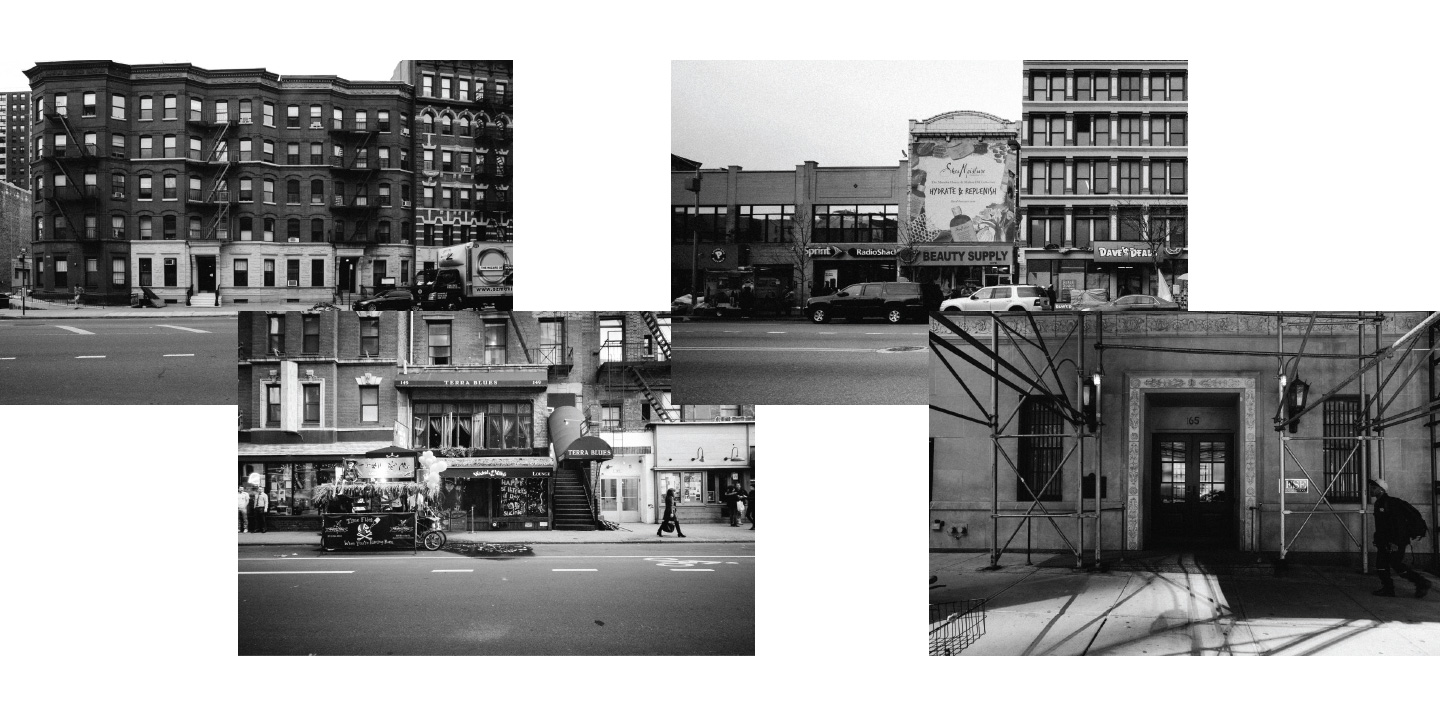
Sensing the need for a new kind of ensemble while on tour in Europe, Albert wrote to his brother Donald in Cleveland. To that point, Donald had fiddled with alto sax and played gigs here and there in Ohio, but his playing was not particularly notable and he hadn’t developed a distinctive voice in the instrument. Albert told him to learn trumpet and move to New York when he was ready. He had two motivations. One, he and his brother were close, and Albert wanted family near him, and two, his vision for what his music could become was very specific, and required a horn in front who would play differently than anyone else on the scene at that time. Donald, who greatly admired his older brother and was excited by the idea of life as a jazz musician, could help to get him there, and he did as he was told, practicing his new horn every waking hour. Though his mother was devastated that her younger son was also leaving her and begged him not to, Donald prepared to move to New York with his brother.
By March 1965, both Ayler brothers were now living in New York. Albert had assembled a new band, one that hinted at everything his music would become during the next two years. Donald, though he had only been playing the instrument for a few months, was on trumpet. Lewis Worrell had replaced Gary Peacock on bass, and Sunny Murray was still playing drums. On March 28, for a gig at the Village Gate on Bleecker Street, just across the street and down the block from the Take 3, a cellist named Joel Freedman joined the band. It was an important evening for Albert. The new sound he was developing was coming close to reaching its final form, and the music was being recorded by Impulse!, the well-funded label whose marquee artist was John Coltrane. Coltrane was also on the bill on this night, along with astrally-focused bandleader Sun Ra, singer Betty Carter, and others. The evening was a benefit for The Black Arts Repertory Theater, founded by poet and jazz critic LeRoi Jones, later known as Amiri Baraka.
In his liner notes for the live album on Impulse! culled from this evening, The New Wave in Jazz, which featured the Ayler piece “Holy Ghost,” Jones wrote that “Albert Ayler is a master of staggering dimension, now, and it disturbs me to think that it might take a long time for a lot of people to find it out.” In Jones and Coltrane, Ayler was developing important admirers. During interviews in this period, when Coltrane was asked about new players on the scene, he almost always mentioned Ayler. Coltrane loved the younger man’s music, and in the past year, they had become close. Coltrane’s approach to music was one of deep focus and relentless study, and it’s possible that he heard in Ayler’s work a kind of playfulness and intuitive musicality that was harder for him to access. And for the rest of 1965, especially, Coltrane’s sound was deeply influenced by Ayler—it’s impossible to imagine pieces like the grandly anthemic “Selflessness” and the highly melodic themes of Meditations without Ayler’s presence.
Jones’ writing also served to place Ayler’s music, and free jazz in general, in the context of the tumultuous political changes, particularly those pertaining to civil rights. From its structure to its relationship to transition, free jazz was a natural soundtrack to the broader quest for freedom and equality, and Ayler’s music in particular, which was theoretically complex but also deeply grounded in the black music tradition, had a particularly intense relationship to the moment. Ayler himself described what he was doing as the blues, but a new blues, one that fit with what was going on in the world at this time. He was making music to praise God. He thought of it less as a call to arms and more as a soundtrack to the aftermath, a vision of what the world might become when peace and equality ruled the earth.
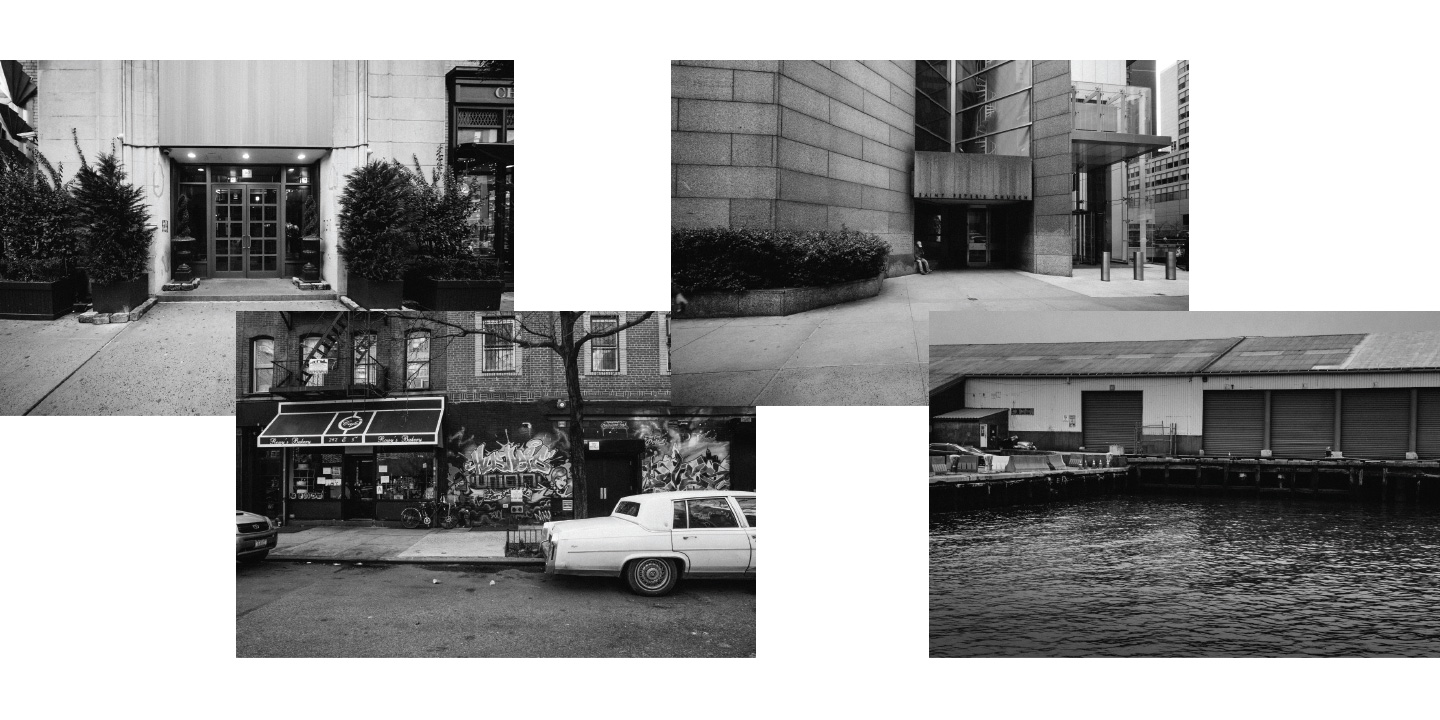
With Donald on board and the regular addition of strings, Albert’s music was reaching the peak of its power. Unlike the horn players Albert worked with previously, Donald was neither a subtle accompanist or breakout soloist on his own. His role now was something akin to a bugle player in a military band, bleating out the themes and helping to guide the band from one section to the next. When the themes would break down and people would start soloing, Donald was prone to a series of loud trills that generally had little in the way of variation. But his tone was rich and fat, reminiscent of trumpet players from before the bebop era, and he specialized in loud, deeply felt statements of melody that gave the tunes shape. And with strings in the band, Albert’s music was developing a symphonic grandeur to match the busy feel of the New Orleans-style ensemble, the classical instrumentation reaching back to the music’s European roots as the horns stayed rooted in African-American tradition. Another ESP album, Spirits Rejoice, recorded at Judson Hall on 57th Street in September ’65, finds a version of this band—joined by alto saxophonist Charles Tyler, a friend from Cleveland—in full flower.
Through 1965 and ’66, Ayler’s ensemble would gig often at Slug’s Saloon, a small club in the Lower East Side that was especially receptive to the daring jazz being created at the time. Opened in 1964, Slug’s was developing a reputation not unlike that of Minton’s Playhouse in Harlem two decades earlier—a place for the most adventurous musicians to gather and play for each other (in 1966 and ’67, Sun Ra had a regular residency at Slug’s). As heard on the double album At Slug’s Saloon, recorded in May ’66, Ayler’s shows had grown into long medleys where one song segued into the next, and the wild energy of his earlier solos were being channeled into unbearably intense statements of melody. The music was not “free” in the strict sense of the word, but it was open and welcoming and utterly unique, with a deep feeling of joy permeating the whole.
But if Ayler’s music was reaching new artistic heights, gigs at tiny clubs like Slug’s weren’t paying the bills. Ayler’s peak years as an artist in New York were also his most financially impoverished; he was releasing records on small labels like ESP and Debut and playing small rooms, and his band had up to a half-dozen members to pay. He was often desperate, to the point where he couldn’t afford to buy food, and to get by he frequently borrowed money, most often from his father or from John Coltrane. His mentor then did him one better. In the fall of 1966, at Coltrane’s urging, Impulse! offered Ayler a record contract; a gig recorded live at the Village Vanguard in December, with Coltrane in attendance, would form the basis for his first album on the label, Albert Ayler in Greenwich Village.
Trane was able to get Ayler signed to his label, and he was there in the room at the moment when the music from his first album for the imprint was created, but he wouldn’t live to see its release. In July of 1967, Coltrane succumbed to liver cancer at age 40, and one of this last requests was that his funeral would feature performances by Ayler, along with Ornette Coleman. The service, held at St. Peter’s Lutheran Church on Lexington Avenue, featured a performance by Ayler’s band—Albert and Donald, along with Richard Davis on bass and Milford Graves on drums—playing the balcony to open the event, and several minutes of the hair-raising performance survives on tape. Ayler played a medley of three of his best known themes—“Love Cry,” “Truth is Marching In,” and Donald’s composition “Our Prayer”—with an intensity and depth of feeling that almost defies belief; at the end of the segment, Ayler begins to solo on his horn and then he removes the saxophone from his mouth, screaming wildly and wordlessly in the church.
Following Coltrane’s death, Ayler’s life became a series of extremes. For a time, the Impulse! advance afforded him a certain degree of financial stability, but Ayler no longer had the great saxophonist in his corner. And Ayler’s music was on the verge of dramatic transformation, shifting to a more commercial rock and R&B sound. The reasons for this shift have never been clear. Some accounts have Impulse! executives encouraging Ayler to try his hand at more commercial genres in order to bring his music into the broader youth culture. His new girlfriend, Mary Parks, known professionally as Mary Maria, was also having a profound impact, encouraging his mystical pursuits and collaborating with him on new songs that included her lyrics. And Albert’s brother Donald, his increasingly erratic behavior fueled by heavy drinking, was inching toward what would later be described as a nervous breakdown, and was gone from the band by early 1968. That year saw the release of the album New Grass, followed by Music Is the Healing Force of the Universe. Though each has moments of adventurous experimentation remained (see the blistering bagpipe solo on “Masonic Inborn”), the albums were rife with now-dated flower-child lyrics by Parks and some shaky lead vocals form Albert. New Grass even opens with what amounts to an apology, a spoken-word section from Albert which he acknowledges that this music is different from what he’s played before, with a hope that listeners will give it a chance. Baraka’s magazine The Cricket responded with harsh reviews.
As the decade wound down, Albert was suffering from a tremendous amount of guilt about his brother’s unstable condition. His mother had not wanted Donald to move to New York, and now that he was unable to care for himself, she insisted that Albert step up. Albert and Mary wanted Donald to return to Cleveland, to be looked after at home. The rift in the family was causing an increasing amount of strain. For his part, Albert was trying for a quieter life. He moved out of Manhattan and into an apartment with Mary in Park Slope, Brooklyn. Sometimes the couple would play in the open air together in Prospect Park, he on tenor and Mary on soprano saxophone, which he was teaching her. Interviewed in Europe in 1970, Albert was asked about his place in the New York scene of the time. “It’s not for me,” he said. “I stay off to myself.”
The last months of Ayler’s life remain a mystery. The European shows were well received, and while the form of his music lacked the daring and intensity of several years earlier, recordings of two gigs find Ayler playing as well as ever. At some point during the year, Impulse! dropped him from the label. Despite his overtures to the mainstream, Ayler’s records sold badly. Some people describe Ayler behaving strangely later that year, including a report of him wearing a fur coat and gloves in the summer heat, his face covered in Vaseline. Others who saw him during these months noted nothing unusual. Mary Parks said that their precarious financial situation, coupled with concerns about Donald and the declining health of his mother, had pushed Albert into a dark place. Following an argument, he left their apartment and disappeared. She notified the police. Three weeks later, his body was found floating in the East River next to the Congress Street pier in Brooklyn, and the coroner said he’d drowned. Suicide seemed likely, but the circumstances of his death remain a mystery.
If Cleveland was Ayler’s roots and Europe was where he first saw a beautiful vision of what his music could be, New York is where all the threads of his music came together as one. In 1965, tenor saxophonist Archie Shepp, another Coltrane protégé (and a great admirer of Albert), called his new album Fire Music. Four years after Coleman’s Free Jazz, the title caught the feeling of the New York present, when the crackling energy of the music and the pulsing vibrations city met the righteous political fury of the moment. Ayler’s music captured the light and heat of this particular epoch perfectly, but the intensity proved to be too much. For him, life as a musician in New York was like pushing a boulder uphill. “I’m playing about the beauty that’s going to come after the tension and anxieties,” Albert said about his music in the liner notes to Live in Greenwich Village. He never got there, never got to see what the view of the sky looked like from the top.
Longform: Why the Death of Greatest Hits Albums and Reissues Is Worth Mourning

Longform: Grateful Dead Live On: Why the Legendary Band Still Matters

Yearbook: Chicago’s Disco Demoliton, Cheap Trick, and the Rise of House Music


In 1957 the great jazz bassist Wilbur Ware released an album called The Chicago Sound. That recording captured a fleeting moment in the city’s rich musical history, with an emphasis on the brawny and bluesy school of tenor saxophone style indigenous to Chicago, here due to the playing of Johnny Griffin. But applying its titular phrase in any broad sense to the city has always been foolhardy—if anything has ever defined the place, it’s been the variety of traditions thriving within and around its borders.
In 1979, Chicago’s music culture, disparate and expansive as ever, was undergoing a turbulent transition, even if didn’t seem that way at the time. Styx, Chicago, REO Speedwagon, Head East, and Cheap Trick were among the most popular rock bands the city called its own—even if most of them weren’t from Chicago proper—and there was very little that unified them outside of geography. Blues, jazz, and soul remained vital communities, even if shifting tastes weakened their commercial status, and polka, a reeling musical mutt created by Eastern European immigrants, remained vibrant albeit off the mainstream radar.
Unfortunately, one of the things that attracted national attention to Chicago that year was a novelty record by Chicago proto-shock-jock Steve Dahl. In 1978 he was fired by his long-time employer WDAI after it switched its format from rock to disco. Part of his response was to release “Do You Think I’m Disco” on a small independent country label called Ovation; it was a single that parodied the Rod Stewart hit “Do Ya Think I’m Sexy,” fomenting a reactionary revolt against mainstream disco—Saturday Night Fever, Studio 54, cocaine, and polyester three-piece suits—and it reached #58 on the Billboard Hot 100 chart. The single was just part of an anti-disco campaign the DJ had been waging all year. When disco singer Van McCoy, who scored a massive hit in 1975 with “The Hustle,” suffered a fatal heart attack on July 6, Dahl destroyed a copy of the record on air.
The DJs efforts culminated in an event his station WLUP cooked up with Mike Veeck, the marketing director of the Chicago White Sox, dubbed Disco Demolition Night. Fans could get tickets to a doubleheader on July 12 against the Detroit Tigers for just under a buck if they brought a disco record to contribute to an ad-hoc funeral pyre. A giant box was set up in the outfield and filled with the records and explosives, and after the first game, which the Sox lost, Dahl, dressed in military camouflage and wearing a soldier’s helmet, drove a jeep onto the field. He told the capacity crowd, “Now listen—we took all the disco records you brought tonight, we got 'em in a giant box, and we're gonna blow 'em up reeeeeeal goooood." And that’s just what he did.
The crowd—dominated by rock-loving kids more than baseball fans—went berserk, swarming the field in a celebratory haze. It took the Chicago police to clear the field, but the damage to the playing surface was so extreme that the Sox were forced to forfeit the second game. The imagined target of Dahl’s song looked an awful lot like John Travolta’s character in Saturday Night Fever, Tony Manero. The DJ has always said that there was nothing beyond the surface of the stunt beyond a love of rock music, but it was impossible to miss how racism and homophobia fueled the mayhem that night, hardening a divide in popular music that has remained to this day.
Pioneering house DJ Frankie Knuckles famously claimed that “house is disco’s revenge”—words that have proven prescient over time. In 1979 what would eventually be known as house music had officially taken root among a largely gay segment of the city’s black population, through all night parties at juice bars like the Warehouse, founded by New York transplant Robert Williams a couple of years earlier. But like several musical communities that would come to define Chicago in the decades to come, it was in a nascent period, finding its way and developing an aesthetic that eventually would rival the influence of the city’s old blues scene in terms of global impact.
The city’s underground rock scene was even less developed, but its seeds were being sown. In a couple of years DJ and fan Terry Nelson would introduce some of Chicago’s most important punk bands including Naked Raygun, the Effigies, Strike Under, and Silver Abuse on the 1981 live compilation Busted at Oz, released by his imprint Autumn Records, which also put out the first records by goth-leaning post-punk band Da! Looking back on the Dahl fiasco he says, “We didn’t like disco, but that whole thing made us laugh because the rock stuff those kids were into was complete shit.” At the time Nelson had a show on WZRD, the long-running radio station of Northeastern University, that specialized in punk, but he notes there wasn’t much of the music happening in Chicago outside of Silver Abuse, the Cunts, Tutu & the Pirates—who were as much joke band as punk combo—and the Nodes.
Cary Baker happened to be the Ovation Records publicist when the Dahl single was released, but he didn’t have much interest in the record or the music the DJ was championing. He’d recently moved back to the city after graduating from Northern Illinois University in 1978. Baker had omnivorous musical tastes, but while in school his adoration for British Invasion rock led him to the burgeoning power pop scene sprouting up around Chicago’s exurbs. In 1975 he caught Rockford’s Cheap Trick in DeKalb and they turned him into a zealot; he befriend the group and wrote stories about them for local music rags like Illinois Entertainer and Rockford’s Lively Times, which he soon edited. He says, “Cheap Trick were the roots of new wave, and they revolutionized power pop in America.”
Baker, who moved to Los Angeles in 1984 to become publicist for a hot new indie called I.R.S., began writing for Creem, New York Rocker, and Trouser Press and worked tirelessly to promote the new pop sound. In 1978 he formed a short-lived indie called Fiction that released the debut single from the Names—the other power pop band from Rockford at the time—and a couple of records by early Chicago new waver Wazmo Nariz, later signed by Stiff Records and then I.R.S. He financed an early EP by Tutu & the Pirates—whose members were classmates of his at suburban New Trier High School—but he balked on releasing it, returning the master and reimbursing them for studio costs. He also wrote about the regional scene for Greg Shaw’s Bomp, and while in school he got a package from Zion, Illinois containing a copy of Black Vinyl Record, the self-released 1977 debut album by the Shoes. His advocacy led them to record for Bomp, which then led to a three-album stint at Elektra.
But for Baker it wasn’t all as new as it seemed. He points to the late '60s Chicago garage bands who mainlined Merseybeat and reformulated it for the working class Midwest—groups like the Buckinghams, the American Breed, Cryan Shames, and the New Colony Six. In a recent Cheap Trick oral history published by the Chicago Reader, Pezband drummer Mick Rains says, “I think it was the Buckinghams' fault. They played in front of that fountain in Grant Park in 1965, it got in the water, and these kids drank it. It turned every garage in the suburbs into a Fender amp store or a recording studio.” Indeed, by 1979 if there was a single sound that characterized the best Chicago area rock it was power pop: Cheap Trick, Shoes, Off Broadway, and Pezband among others. But by and large those bands didn’t see themselves as new wave acts, and Baker notes that Cheap Trick were thrilled to land tours supporting the likes of Journey and Heart. The group’s first three studio albums for Epic didn’t achieve much success, although “Surrender,” from their 1978 album Heaven Tonight, reached #62 on the singles chart.
But, naturally, Cheap Trick was big in Japan. They toured the country in 1978, were treated like massive rock stars, and a Tokyo concert on that tour was soon released as Cheap Trick Live at Budokan, although only in Japan at first. But demand for the import eventually led Epic to release it in the US and Cheap Trick were no longer a regional band—it went triple platinum and produced a pair of top 40 singles in “I Want You to Want Me” and its cover of the Fats Domino classic “Ain’t That a Shame.” Cheap Trick maintained its love of pure pop, but they loved being rock stars more. Meanwhile, several revolutions were heating up: house would soon be recognized as a concrete style rather than the lifestyle sound it was at time, causing a genuine paradigm shift in pop music, while Chicago’s fierce and scrappy independent spirit would produce one of the most creative and original rock scenes in the country, one that spurned the sort of stardom Cheap Trick had finally attained.
Interview: James Blake and the Pursuit of Happiness

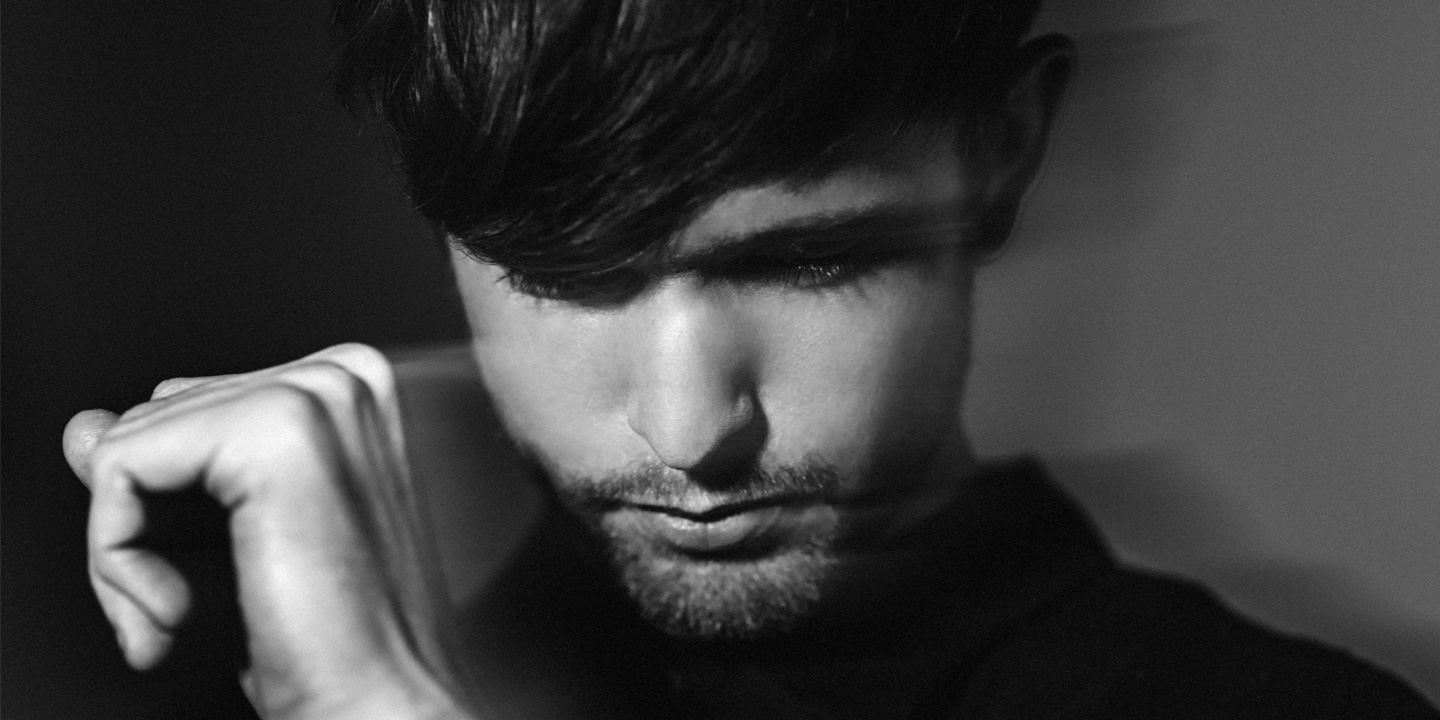
It’s easy to understand where James Blake gets his reputation.
In the six years since his career took off with a major label deal, the British songwriter has become a master of his own style of melancholy, dub-inflected songwriting. His distinct falsetto—first used sparingly amid mysterious electronic tracks, now an inimitable hallmark of his sound—is often warped with reverb and digitization to sound hauntingly lonely, or robotic, or whatever else his meticulously assembled elegies call for.After two critically acclaimed albums’ worth of this, a Mercury Prize, Brit and Grammy nominations, and hundreds of worldwide tour dates, it makes sense that he’s now known as one of music’s most somber sad boys. He gets the same jokes that follow Bon Iver’s Justin Vernon around—you know, the ones that suggest they’re actually magical woodland creatures. (No wonder the two men are now close friends and collaborators.) Blake knows his stone-faced public demeanor—or his phantom forest music videos—hasn’t done much to dispel that image, either.
“There are a lot things I thought I was—and that maybe I tried to portray myself as being—and one of those things was ‘serious,’” the 27-year-old says, emphasizing that last word dismissively, like he no longer believes it even exists. “That wasn't me.”
It’s the middle of April, and Blake is sitting in the afternoon sunshine on a restaurant deck at the end of the Malibu Pier. Wearing a mint-colored floral shirt with birds on it, eating salad and drinking iced coffee, and making dry jokes about the toddlers screaming at the next table, he looks like a man who is perfectly comfortable out in the open, among humans. With his small, round, iridescent sunglasses—a pair that can only be described as “groovy”—he might even seem a little goofy if his tallness didn’t also give him an air of unflappability. Based on appearances, it seems like much has changed in the three years since his last album, 2013’s Overgrown.
During that time, Blake has shared studio time with a cornucopia of top-tier talent: Vernon, Kanye West, Drake, Vince Staples, Rick Rubin, and even the elusive Frank Ocean. And Rubin’s Shangri-La Studios here in Malibu was the birthplace of a good chunk of his new album, The Colour in Anything. Blake says the record is the result of some of the healthiest, most productive years of his adult life. His relaxed attitude today is as new to him as it is to me, and he’s eager to dissect the changes he’s undergone.
“For this record, I just decided that I was going to let people in and allow help,” he says of Colour, which features guest spots from Vernon and psychedelic New Zealander Connan Mockasin, as well as songwriting contributions from Ocean and production from Rubin. It still features the singer’s signature harmonies—those poignant tributes to broken relationships and life in the modern era—while adding more acoustic piano improvisations and introspection. Some songs have him sounding more blatantly heartbroken than ever, and it’s hard to miss the naked woman drawn into the gnarled branches of the album’s illustrated cover. But despite being 75 minutes long—nearly twice the size of Overgrown—the record also feels less obsessed-over. This loose quality is perhaps thanks in part to his newfound openness to collaboration and assistance.
After spending nearly his entire adult life in the spotlight, he’s been making a conscious effort to keep everything in perspective, to get out of his own head and live a normal existence. Whether in the studio with Ocean (who he names as Colour’s biggest influence) or Staples (for whom he’s been producing beats), or back in the outside world catching up on lapsed friendships, Blake has spent the last three years consciously removing himself from the dark, moody hole he dug for himself following his instant success.
And if you believe in karma, you might say this personal evolution has rewarded him: Colour arrives directly after his appearance on Lemonade, Beyoncé’s latest world-stopping pop gambit. In addition to helping pen the record’s opening track, he also co-wrote and sang on the song “Forward,” which shows up at the visual album’s most sobering stretch, as images of the mothers of Eric Garner, Trayvon Martin and Michael Brown—each holding a photo of her late son—flash across the screen. Blake has now arrived at a moment in his career where his music resonates powerfully enough to soundtrack the cultural moments of the biggest stars on Earth. And he’s never seen more clearly.

“I listened to my old music and I really didn't sound like a happy person. I wouldn't want to be one of those artists that keeps themselves in a perpetual cycle of anxiety and depression just to extract music from that.”
—James Blake
Pitchfork: How did the Lemonade feature go down?
James Blake: Beyoncé came to the studio, and I was sitting at the piano when I met her. She was just lovely. I came up with something to go with an idea she had; I just embellished her melody. I think the idea was to use some of her lyrics, but I didn't realize that—I misunderstood and did something entirely different from what she wanted. But it didn't matter, because she really liked it, and they ended up using [my version]. Blue Ivy was there, too, which was nice. She was singing along to the song, which was a huge compliment, because kids just don't have any pretense whatsoever.
Had you been in touch with Beyoncé’s people for a while before you actually did the song?
Not for that long. She has very nice people working with her. To be honest, in that world of very, very high-profile musicians and artists, it's quite rare to have a personal touch, because by that point it's kind of a well-oiled machine and sometimes experiences like that can be quite sterile. I enjoy working with somebody that collaborates in the traditional sense, where you actually sit down and make music. I was worried a little bit that it wouldn’t be like that, but I was working with material that she'd made and collaborating with it. Getting to chat with her about it was really nice. I guess that's as good as it gets with somebody as brilliant as her. With somebody at that level, you can never really be sure, just because there's so many people involved in a record, but she's such an accomplished writer and singer.
Did you have any idea where or how your song would fit into the album or film?
None at all. I was pleasantly surprised to find that my song came in at the point that it did, and that she harmonizes with me for a brief moment. The first time I heard that, I got chills. And I found the way it's used in the film really moving, seeing the mothers holding up pictures of their sons that have been killed via police brutality. I was honored.
What has the reaction been like for you? Were people in your life surprised?
Yeah. It just shows you the reach that she has—I had cousins of cousins ringing me. I really hadn't expected it. It's just really flattering.
Was that a coincidence that it came out so close to your own album?
Yeah, it really wasn't planned. I wasn't sure when she was going to release anything. But it’s very good timing, indeed.
How do you view The Colour in Anything in comparison to your previous work?
It's bigger in scope and a byproduct of a lot of change and growing up, really, a lot of self improvement and reflection. My relationship was a catalyst for those kinds of changes; the person I’ve been with for the past year or so really brilliantly held up a mirror to me. I mean, I grew up an only child, and then at 21 I became quite famous—you’re in a petri dish, and people are just peering in on your progress. I feel now as if I can identify with more empathy and relate to people.
You've caught up?
I think that's what it is. A lot of what I'm talking about is very normal for everyone else, because they grew up with brothers and sisters, or have had a very active social life. But I think musicians and artists especially risk falling away from the normal growth. I realized there was something worth saving and fighting for, and that meant looking at myself. It's been really great in the long run, but it was painful.
This record is more expansive that your last, in both the variety of styles you’re playing with and in terms of length. Did you set out to make a more ambitious album this time?
No, it was weird. When you’re living an unstructured life, you can quickly develop self-doubt. You haven't learned the same mechanisms for keeping yourself busy or active, and I slipped into a habit of being quite unproductive. I was making music, but I did all kinds of procrastination, trying to live a normal life, basically. I needed to improve my headspace, so I spent a year trying to improve my mental state. And then, just by doing that, I ended up writing a lot of the best music on the record.
You mentioned you were more open to collaboration this time around as well.
In the middle of recording, I felt like I wasn’t going to finish this record if I didn't get some help and start working with other people. Making a record on your laptop is not the most stimulating process socially. You can really fall into the sinkhole if you're not careful. So I thought, Fuck this, I’m going to spend time with other engineers. The idea came from working with Frank [Ocean], who was a huge inspiration for this record: his process, the way he writes, the strength of what he does, who he is. We became very good friends.
When I was working on some of his music early on, there was this chord progression I didn't like in something that we were making, and I had an idea. A producer was in the room when I was coming up with it, and he was like, “Nah, I think the chords are fine.” I was like, “No, no.” Then he basically said, “This is Frank's music.” And that’s exactly what I hadn’t learned by working on my own all these years; it's the first lesson in producing, to let go. Frank's vision was the only thing that mattered, at the end of the day. If the tables were turned, and Frank were to have a particular opinion about my music, I would take it into consideration, but it's about my gut feeling as well. But learning from that made me want to work with other people on my own projects.
But you're also saying this Frank Ocean record going to be worth the wait, right?
Yes, from what I know. It may be subject to change. He is onto something, he really is.
How did your approach change on this album, musically speaking?
I explored sitting at the piano and singing a lot more. I would talk with Justin Vernon, who is a great producer—a lot of people may not know that about him. He's a good person to talk to. Much like Rick [Rubin], actually. Justin is an incredibly warm man. We've become really good friends. When I first met him, it felt like we had been separated somewhere down the line and were meeting each other again. It was a very strange feeling. In the studio, he would say things like, “Oh man, I love the chords in that track,” and that gave me so much confidence. Singing standing up at a mic with someone else recording was new, too; there never was any time to set up properly before.
You once talked about working with Kanye, but he’s not on the record. Did it not work out?
Something was supposed to happen; I don't really know how to describe how that didn't work out. I wanted Kanye to be on the song "Timeless," but the verse didn’t materialize. I think a huge swath of things happened in his life, and I just stayed out of it. Eventually, the mood of the album changed, and in the end I don't think it would have fit. But I didn't say I was working with Kanye just so people would get interested—I really wanted him to be on it.
Did you actually meet up?
Yes, it was hilarious, because I'm just not used to the kind of environment [he lives in]. So he tells me, "Let's meet in the Hidden Hills." I've never been there—it's almost like a celebrity resort, with a gate and everything. That was one of the most frantic car rides of my life. I had put "Hidden Hills" in the [GPS] and ended up in a farm somewhere. And I remembered some experiences I’ve had with people in America being late and kind of unreliable, and I thought, Man, if Kanye's late for me, it's not going to happen.
And then you were late?
I was twohours late. I got there and was like, "I am so sorry." I was frantic. But he was so cool about it. Really lovely. So, you know, socially, it worked out in the end. It just didn't yield any music. And that's OK.
You have a reputation for making melancholy music. Were you trying to get away from that this time?
I listened to my old music and I really didn't sound like a happy person. It was surprising to find out that I had been fairly unhappy that whole time, and people close to me may not have noticed. I'm not saying I didn't enjoy anything, but those first four years of my career—I'm not sure I remember as much of it that I would like to, in vivid technicolor. Some of it is grayed out. I realized that [when it comes to making music], it wasn't important whether I was happy or sad—it's about sensitivity and your reaction to the world. I wouldn't want to be one of those artists that keeps themselves in a perpetual cycle of anxiety and depression just to extract music from that.
It's a toxic way to live.
Totally. With my first two records, as much as I see music I'm very proud of, I also see a headspace I don't want to be in anymore. I’m happy to be sitting out here really enjoying it. It's all in color.
Has your relationship with people in your life changed as well?
Yeah. What I've noticed is, when people see you become famous, they stop asking you how you are—really, deeply, how you are, not just, “How's the career going?” I mean, “Are you all right?” Because they assume you are. And they stop telling you what happened on their weekend. So it takes a little bit of work to get people to remember that you do really care; just because I went to Brian Eno's house for tea doesn't mean that I don't want to know what happened when you went clubbing on Friday night.
I'm not a dubstep person—
Neither am I.
But do you think making music in that world lends itself to more doom and gloom?
Absolutely. It was so funny, when I was making music like that, I heard a lot of people saying, “Oh, I can't really dance to this, it doesn't have any melodies.” At the time, I was like, “What are you talking about? This is the perfect expression of everything I'm feeling at the moment.” But I now understand why they were saying that. Now I kind of get it.
Longform: Internet Explorers: The Curious Case of Radiohead’s Online Fandom

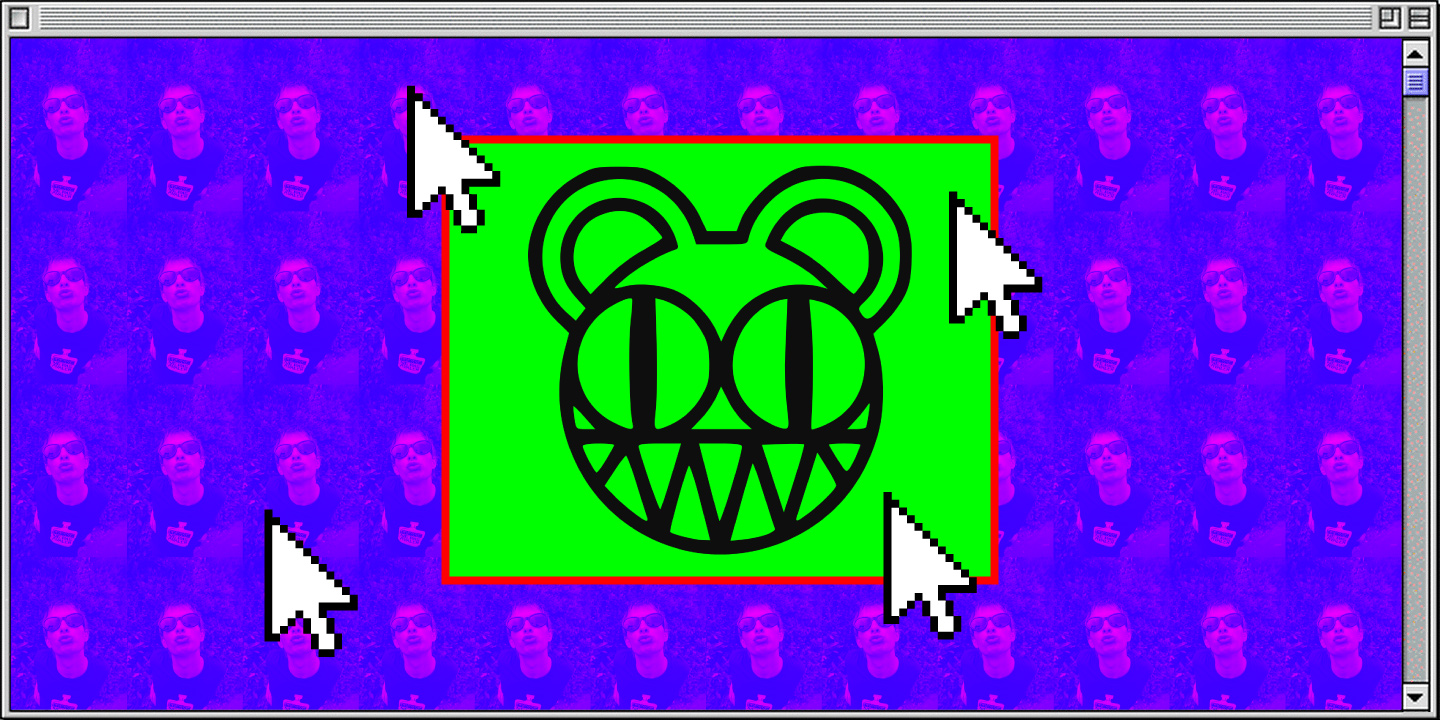
When longtime Radiohead fans saw the words “True Love Waits” on the tracklist for the band’s new album, they collectively lost their shit. “TRUE LOVE FUCKING WAITS THOM ACTUALLY DID IT THE ABSOLUTE MADMAN,” one user wrote online. The song was a live favorite that had been teased for more than 20 years but never properly recorded, and the existence of a definitive version offered the closure of a long-open loop, like finally discovering what was in Pulp Fiction’s golden briefcase. “It’s been a long journey for us and the band,” reflected another fan. “I feel as if this was their way of saying thanks, thanks for it all.”
The communal release came after months of frenzied speculation on message boards and throughout social media, as followers scrutinized mysterious leaflets, the registration of a new company, and totally humdrum in-studio photos. This zealous anticipatory dance has become typical for new Radiohead albums, igniting warm reminiscences, excitement, and even a little anxiety. One diehard named Megan told me that, over the last few months, she would wake up in the middle of the night and immediately check her phone to see if the record had dropped. She even dreamed about its release—a nightmare, in fact, because her fantasy album turned out to be made up of Radiohead-penned songs performed by other artists. “I was just devastated that it wasn’t them,” she said. “It was pretty ridiculous.”
From a distance, such devotion to a bunch of middle-aged British art rockers could seem a little wild. But in the five years since 2011’s The King of Limbs, Radiohead’s reputation as an iconic band that spans generations, continents, and technological eras has only gotten bigger. These fans now have more ways to discuss the cloud of rumors that constantly surround the band’s activity, allowing for stray theories to percolate into near-certainties as sites like Twitter and Reddit exponentially speed up the spread of information. At this point, there are teenagers Snapchatting selfies with their Radiohead concert tickets as their parents get wistful on Facebook about buying OK Computer the first day it came out.
Radiohead isn’t the only band whose mere gestures get turned into news stories, of course, but they’re unique in that the underlying architecture of their internet fan network has been in place for more than 20 years. As the internet developed, so did Radiohead, and an understanding of the long-running relationship between the two helps explain why people are still willing to devote their waking hours to the pale quintet’s every move. Because once you head down the band’s endless internet rabbit hole, digital ephemera starts to gain purpose, and mistakes turn into clues that make a strange sort of sense.
Consider an Instagram picture of a red moon posted by Radiohead visual artist Stanley Donwood earlier this year, which incited much fan speculation after it was hastily deleted. And then consider the new album’s title: A Moon Shaped Pool. Suddenly, Donwood’s erasure seems like a definite—though admittedly vague—portent, a reason to believe.
Throughout the 1990s, Radiohead thought deeply about the approaching technological age in a way that presaged our modern online era, with its concerns about what all these screens are doing to our brains. “Scrolling up and down, I am born again,” Thom Yorke sang on OK Computer’s “Airbag,” which was written about a car accident, but could also describe the experience of using a message board. Their popularity took root amongst the first wave of internet users, back when the web was more anarchic and undefined, and used primarily by people who felt alienated enough to sit in front of an ugly monitor and post under a pseudonym when almost nobody else was doing it.
Nowadays, we know more than ever about our favorite bands and artists thanks to social media; 20 years ago, though, most bands didn’t even have a website. Radiohead were an exception. But their early online hub was incredibly sparse: a few pages of GIFs and seemingly random text, with little in the way of actual information. No lyrics. No tour dates. No news. It was an allusive vacuum, waiting to be filled.

At the end of 1996, Adriaan Pels was 23 years old and working as a hotel manager in Groningen, Holland, where he grew up. He had an internet connection, which was relatively novel: In that year, less than one percent of the total global population had web access. Pels was looking for something to do online, so he decided to start a website. One inspiration came to mind: Radiohead, a band he’d been hooked on ever since coming across a queasy eruption of a rock song called “My Iron Lung” on the radio and hearing its oddly comforting declaration that “If you're frightened/You can be frightened/You can be, it's OK.” (The group’s breakout 1992 single “Creep” had seemed too much like a novelty to him.)
His new site needed a name. At first he called it Pop Is Dead, after an early single, but that sounded a little lame. In the middle of 1997, he thought of a snippet from “Fitter Happier,” a robo-voiced manifesto from the band’s just-released OK Computer, that seemed to fit, and At Ease went live. Considering its jittery subject, the site’s name was a relatively ironic choice. The calm of the phrase juxtaposed neatly against the profound sentiment on OK Computer that everything was definitely not at ease—that modern times were giving rise to a new sense of alienation, and that the bountiful ’90s could not last. And, practically speaking, “At Ease” was short and started with an “A,” which made it stick out among web rings that indexed fan sites.
Pels detailed his new online hub with hard facts about the band, like the particulars of their discography, which were not easily researchable in a pre-Wikipedia era. He also updated At Ease with news about Radiohead’s productivity, meticulously collecting news items and writing them up as straightforwardly as possible. Occasionally, people would e-mail tips to him. He updated the website when he could, and that was good enough.
Sitting in a Brooklyn cafe, the now 42-year-old Pels looks a bit like the lead singer of the National on an off day in a grey hoodie, beard, and square glasses. Thinking back to his site’s beginnings and how things have changed, he points to a car that drives past us outside the window. “If that car crashes, it will be on the internet five minutes later, or sooner,” he says. “That was much different at the time—it didn't go as fast as it does now.” Another cautionary lyric from OK Computer comes to mind: “Idiot, slow down, slow down.”
Ironically, OK Computer’s wary read of technology may have been most engaging to those already spending more and more time online. The surge of interest in the band drove traffic to the fan sites, including one called Green Plastic, which was started by a 20-year-old named Jonathan Percy in 1997. Like Pels, Percy was attracted to the infinite possibilities of the digital era and saw the internet as the Wild Wild West, or a Choose Your Own Adventure book—an untamed space where anything could happen. And soon enough, such sites became prominent, trusted sources in the swirling world of Radiohead fandom.
In 1998, an MTV affiliate in Europe ran a news item about bands and their fan sites that included Green Plastic. (At the time, Percy’s creation didn’t have its own domain name, so MTV flashed its unwieldy AOL web address.) The attention funneled even more curious listeners to the site, as music fans in general began to migrate away from radio, TV, and magazines. “It kept growing,” Percy recalls.
Within a few years, there were dozens of fan sites devoted to Radiohead. Follow Me Around was founded by Toronto’s Beryl Tomay in the summer of 1997, when she was only 15. Her parents noticed she was spending more time in front of her computer but soon realized she couldn’t be discouraged. “The only time I wasn't really checking it was when I was in class,” she says. “I was pretty obsessed.” In 1999, Miro Bzduch started a site that exclusively catered to fans in his home country of Slovakia. “We didn't have too much exposure to the outside world, so the motivation came from being able to be a part of something bigger,” he says. By 2002, the site was popular enough to justify an English language relaunch called Treefingers.
Meanwhile, the band’s official site started to flesh out. In 1999, it switched from a purposefully opaque K-hole of abstract lyrics and graphics meant to drive fans insane with speculation to a more formal, accessible destination. It was still thin on details, though, and keen to outsource the most time-consuming elements of website management. A page titled “News” read: “Well, obviously if you really wanted news about Radiohead you’d be at some other site that is actually updated more than once a decade. The simple truth is that I don't have any news. But I have found out about some people who do.”
The official site provided links to At Ease, Green Plastic, Follow Me Around, and many others. There was a sincerity and gratitude in this acknowledgment, which was something of a surprise coming from a band often heralded for its obtuse chilliness. A version of the site that came in 2000 added a personal note to its list of links: “These sites have… a flavour far superior to the ‘news’ often found elsewhere. Many thanks to the diligent humans responsible for these pages.”
The release of Kid Adovetailed with Radiohead’s intuitive understanding of the nascent internet culture. Ahead of its arrival in the fall of 2000, the record was streamed for free via a player that any website could embed—the first of its kind—further cementing the link between band and fans. Their official site also launched a message board, where band members would occasionally post, their words highlighted in verified blue.
But just because it was Radiohead’s forum didn’t mean fans would be automatically deferential. In May 2000, someone responded to a message from Yorke by mocking him as a “big star” and accusing him of no longer supporting his local music scene. After a short back-and-forth, the fan asked why he had heard stories of Yorke telling fans to “fuck off” on the street.
Yorke’s answer was grammatically curious but candid: “if i cant handle it then yes. if im fucked up in th head then yes. if i see them again then i would apologise. i am not perfect. i am not very good when people prvoke me. i react. when someone is in you face. interupting you when you are talkign to a loved one. if they are rude. insistent. arrogant and i am not in the mood i will react. if they come up to me in a club pissed out of their head and start drawling away to show off to their mates then i often cant think of much to say. this is why sometimes o dont go out. this is why i often leave the message board. like now. Goodbye.”
Today, even with all the direct avenues opened up by social media, it’s all but impossible to imagine Radiohead ever being as forthcoming about their emotional well-being. Looking back, the post might be read as an attempt to stay relatable in light of the band’s growing fame. “I have a real fucking problem with that,” Yorke once said of the mythology that comes with being in a successful rock band.
At the same time, the way they handled their success couldn’t help but stoke the collective imagination. Nearly every iteration of their official site has been marked by cryptic texts and alien imagery: They are puzzles asking to be solved. As Radiohead’s popularity grew, they never deviated from their aesthetic commitment. The internet was just one more medium for those aesthetics, giving fans more to consider in their devotion. Even their attempts to demystify the process, such as a running diary of the Kid A recording process, contributed to their myth. In acknowledging the fan sites, they teased a deeper connection: When you went to At Ease or Green Plastic, you were reading the same thing Radiohead were reading. Their presence was always known, even when the band itself was absent.
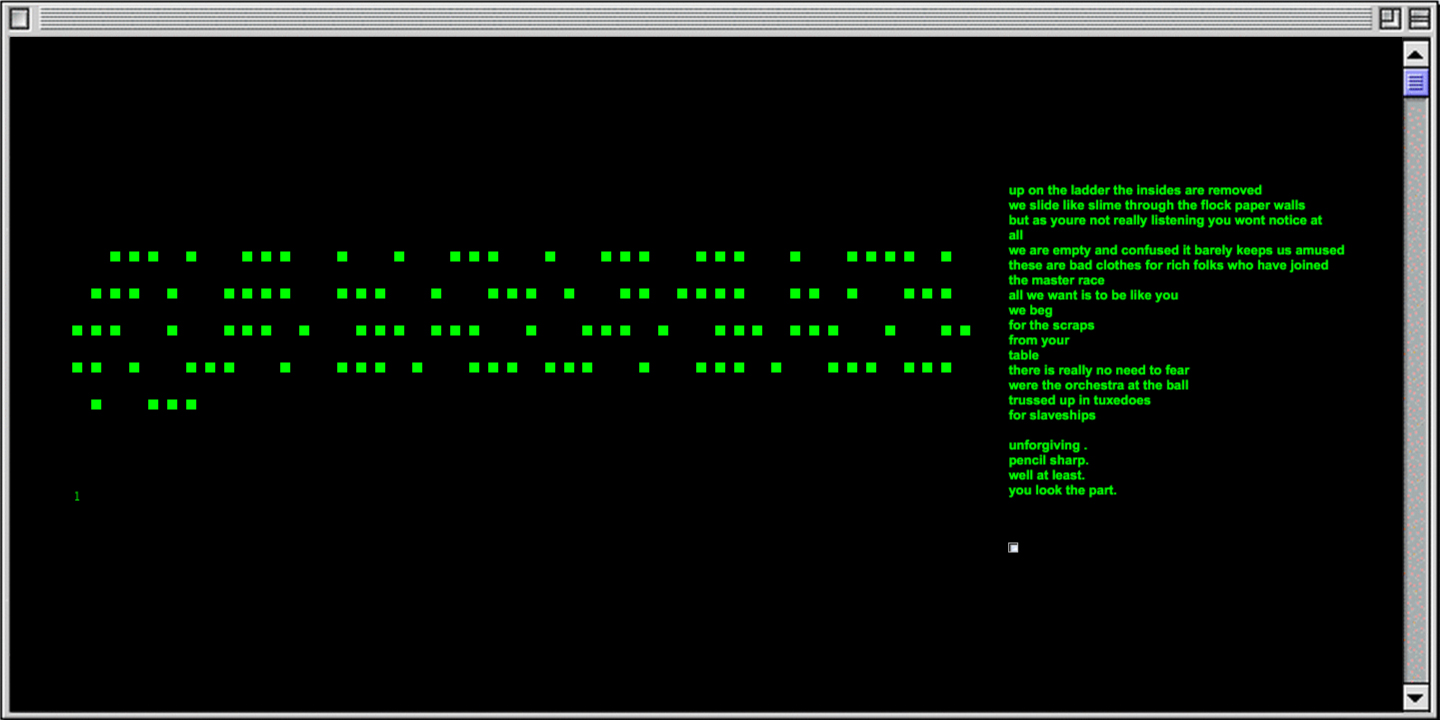
At Ease and Green Plastic also launched message boards that became popular around the turn of the millennium. The posting environment was less exclusive than the official site’s board, where users were careful to maintain their credibility in case a band member dropped by. On the fan sites, there were close readings of the band’s lyrics and slightly conspiratorial discussions over their creative direction. Though Pels and Percy didn’t want to encourage any sense of competition between their sites, their supporters weren’t nearly as nonpartisan. Percy would post a news item and then receive a snide email from an At Ease fan about how his site had been an hour slower, which dimmed his enthusiasm for the passion project.
But such petty sniping was out of his hands and more attributable to the peculiar circadian rhythms driving the behavior of any insular online community. (Fact is, internet users have always been kind of rude.) Meanwhile, Pels and Percy became increasingly elevated as figures of importance within the greater Radiohead scene—online and off. They were approached at shows by people who recognized their photos from the internet. Occasionally, Pels was even asked for his autograph and, one time, he approached Radiohead guitarist Ed O’Brien at an R.E.M. show and introduced himself as the guy who ran At Ease. To his amazement, O’Brien said he knew who he was.
There were other benefits to running websites that so many fans depended on. Pels got to hear an advance copy of Kid A, owing to his friendship with a music journalist who followed At Ease. In the buildup to 2001’s Amnesiac, Percy and Follow Me Around’s Tomay were invited to design content for something called GooglyMinotaur, an AOL Instant Messenger bot that spat out Radiohead information when provoked. Their sites became partners with Ink Blot, a San Francisco-based music magazine that was developing a network of fan sites, and Percy moved out to the West Coast to become a webmaster for the company. Tomay received $20,000 for joining the network, money that went toward her college tuition. They also got VIP tickets to some shows and briefly met the actual members of Radiohead in a casual setting. Before a 2000 show in Toronto, Tomay received the ultimate call out: Before performing “Follow Me Around,” Yorke specifically mentioned her request for the song. “They knew I lived in Canada, and before the concert I put in bold letters at the top of the site’s news section: ‘RADIOHEAD PLEASE PLAY THIS SONG AT THE CONCERT,’” she says. “That was a highlight.”
A connection to the band could also function as a safety net. At one point, Radiohead’s publishing company came after a number of fan sites that hosted the band’s lyrics, threatening to sue over copyright infringement. Percy panicked and reached out to one of his contacts within Radiohead’s camp. Within a day, the issue was entirely resolved, and the lyrics remained.
Such support from an arena rock group was hardly a given in the post-Napster era, when animosity toward the internet’s drastic reinvention of fandom and music culture ran rampant. Yorke, however, loved Napster. In a 2000 interview with Time, he said it encouraged enthusiasm for music “in a way that the industry has long forgotten to do.” So while Radiohead’s songs often took a cold, hard look at technology, the band never forgot the importance of intense fandom, even as their public presence became increasingly withdrawn.
The anticipation for 2003’s Hail to the Thieftook root on the message boards, as traffic to the fan sites continued to shoot upward. The server bills for At Ease leapt from $15 to $700 a month, forcing Pels to put ads on the site and solicit fans for money to help with hosting fees. Around this time, Tomay stopped updating Follow Me Around as frequently. She was starting college, and the combined commitments of her course work and social life took hold. Bzduch shuttered his site, too.
At Ease and Green Plastic still flourished, but its founders’ schedules were also growing more complicated. Aside from his work with At Ease, Pels started doing graphic design for the Amsterdam label Excelsior Recordings. Meanwhile, the bursting of the dotcom bubble forced Ink Blot to kill its network of music sites, but Percy used his connections to start working at an advertising agency in San Francisco. Both men were no longer bored young adults with hours to burn. They were in their early 30s. They had lives.
Radiohead have always worn a shroud of mystery, but they became even more unpredictable as the years went on. Their 2007 album In Rainbowswas released with only 10 days notice, and fans were asked to pay whatever they wanted to hear it. Around this time, Green Plastic’s traffic hit its peak, and In Rainbows eventually became the band’s best-selling record since OK Computer, moving three million copies worldwide. It proved Radiohead could release a record on the most secretive terms, basically for free, and still be wildly successful, even as industry profits continued to plummet. They were able to take that risk partly due to the fan sites and their communities, which offered a solid bedrock of support.
As social media started to expand, Radiohead continued to retreat. They did no interviews or touring in the buildup to 2011’s The King of Limbs and teased A Moon Shaped Pool only as it was about to be released. Their popularity became increasingly untethered from the typical formalities of record promotion, placing them on the same level as Beyoncé and Kanye West. They managed to avoid the frivolities of mainstream, corporate celebrity culture, too: It’s impossible to think of Thom Yorke making a cameo on “The Muppets,” or Jonny Greenwood joining in an all-star band at the Grammys.
Around 2010, Percy grew tired of maintaining Green Plastic. The message board was still active, but there hadn’t been regular updates for years. He met the woman who would become his wife in 2011, but he didn’t tell her he had once run one of the biggest websites for one of the biggest bands in the world until a couple of years into their relationship. The site remained partly as a shrine to his past, as well as Radiohead’s. “I’ve had a lot of people offer to buy it from me and I’ve always been hesitant,” he says. “It’s my baby.”
Pels continued to update At Ease regularly through 2013, drawing the site’s highest-ever single day traffic—421,971 pageviews—on February 18, 2011, the day The King of Limbs was released. But his updates ceased, too. A few years before, he had moved to New York City with his wife, who he met through the At Ease message boards. He was working full-time, and there wasn’t much new to say about Radiohead, anyway. “I’m still planning to get things running pretty soon again, but work's been crazy as well,” he told me in March. Weeks later, the site hadn’t been updated.
Even though these homegrown fan sites have largely lapsed, people are still poring over Radiohead’s every move. A general interest site like Reddit now provides a similar service for the nearly 40,000 fans currently subscribed to the band’s subreddit, and the rise of up-to-the-second news sites and social media has generally made fan sites a curio of a bygone age. Instead of a Pels or a Percy curating updates during their downtime at work, there’s a democratic network of devotees contributing what they can in real-time.
Radiohead’s own website eventually stopped linking to the fan sites. The message board remains, but its intentionally archaic drop-down format could appeal to only the most tenured users, who now mostly circulate in-jokes that are impenetrable to outsiders. In this way, the circle of life continues: I spoke with one fan who said he joined At Ease around 2003 because the band’s official message board seemed too tight-knit, while another said he preferred Reddit to At Ease because it’s far more accessible and not as prickly toward newcomers. In fact, At Ease is currently highly selective when it comes to accepting new members. (There was a recent problem with some trolls.)
Both the At Ease and Reddit forums currently contain plenty of discussion about A Moon Shaped Pool, but the difference involves a sense of history: On At Ease, there are allusions made to memorably irritating users, power-hungry moderators, deleted posts, and members who died and are remembered by their usernames. It’s a web of connections woven over nearly 20 years.
In the days preceding the new album’s release, both Pels and Percy began updating At Ease and Green Plastic to reflect the news. Percy wrote, “It’s been a while, hasn’t it?”
A week before A Moon Shaped Pool came out, Radiohead erased their internet presence, whiting out their official site and deleting their tweets and Facebook posts. The symbolism couldn’t be overlooked: It was their attempt at re-emerging from the ether, a fresh start for a band that has surely wondered how to stay restive as its legacy has grown.
But the gesture could only be symbolic. They couldn’t erase At Ease, Green Plastic, or the hundreds of thousands of connections made through places like them. It’s too glib to say Radiohead wouldn’t have become such an institution without the internet and fan sites, but their career trajectory surely would have looked a lot different had they promoted their music the traditional offline way. And even if the band disappeared completely, it’s nice to imagine the message boards continuing to thrive, adding more layers to a shared history that’s gone way beyond what Radiohead might have thought about when they made songs about the importance of staying human in an increasingly digitized world. There will always be someone on the other side of the screen.
5-10-15-20: The Music That Made Diamanda Galás

Rising: Inga: Outsider Jazz for Modern Times

Longform: The Dark Art of Mastering Music

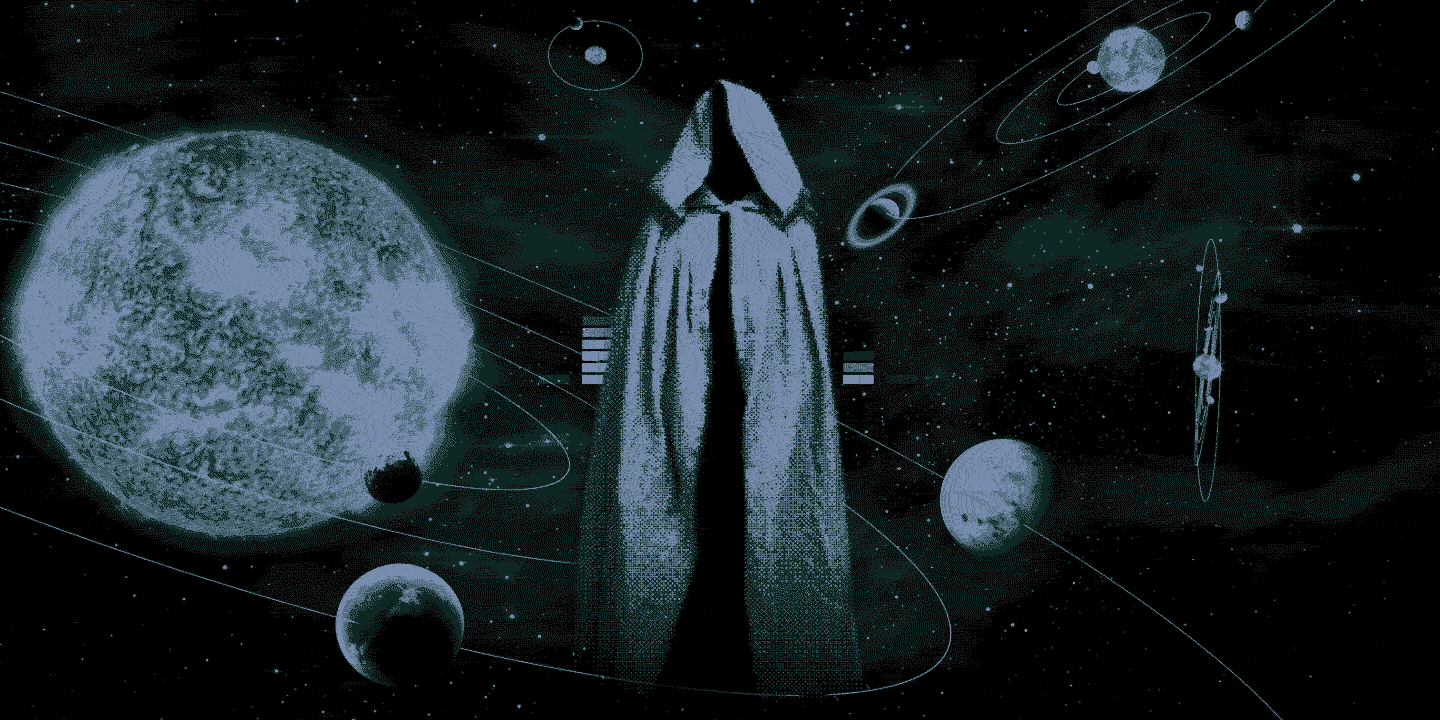
According to many Metallica devotees, the official version of the band’s 2008 record Death Magnetic is not the one worth listening to. Upon the album’s release, fan forums exploded in disgust, choked with complaints that the songs sounded shrill, distorted, ear-splitting. These listeners liked the music and the songwriting, but everything was so loud they couldn’t really hear anything. There was no nuance. Their ears hurt. And these are Metallica fans—people ostensibly undeterred by extremity. But this was too much.
The consensus seemed to be that Death Magnetic was a good record that sounded like shit. That the whole thing was drastically over-compressed, eliminating any sort of dynamic range. That it had been ruined in mastering. Eventually, more than 12,000 fans signed a petition in protest of the “unlistenable” product, and a mass mail-back-a-thon of CDs commenced. The whole episode provoked a series of questions, not just about what had gone wrong with Death Magnetic but about the craft in question: What is mastering, exactly? How does it work? Beyond the engineers themselves, almost no one seems to know.
Generally speaking, an album passes through many hands before reaching yours. Some of them you already know about—the musicians, of course, and the producer, who acts as a collaborator and shepherd through the creative process; the audio engineers who record songs in multiple takes, usually tracking each sonic element separately. These individual tracks are then delivered to a mixing engineer who combines the best takes, adds effects, and puts them back together into a coherent song.
When the mix is finished, and the album is more or less complete, it’s sent to a mastering engineer—which is the point where general knowledge of what’s happening to the music ends. There is the sense that a mastering engineer can save or, occasionally, ruin an album, but even musicians themselves typically know only the vaguest sketches of what’s actually being done. If rock stars are the sex gods of music, mastering engineers are its druids, the ones who work methodically and meticulously, and to whom people come for mystical wisdom and blessing.
“It’s such a dark art,” says M.C. Schmidt, one half of the experimental electronic duo Matmos. His partner, Drew Daniel, agrees. “It’s this mysterious process that a lot of musicians don’t understand, including us.”
The mastering engineer’s job breaks down into roughly two parts—a final edit of the music, and preparation of the files for release. Much of the work is so technical, so reliant on an obsessive knowledge of gear and acoustics and physics, that to talk about it with any level of detail essentially requires speaking in another language altogether.
However, in layman’s terms: The equipment used by the people who record and mix music is far more sophisticated than the equipment most listeners own. Professional audio engineers operate out of carefully calibrated rooms designed to eradicate odd resonances and echoes, and their speakers cost more than your car. But since so few people can listen to a record in such a high-end environment, the music must be adapted to sound as good as possible in all the forms and spaces it will eventually occupy—7" vinyl, MP3 files played from laptop speakers, or movie theater surround-sound, to name a few—and each of these platforms has different requirements and restrictions.
Laptop speakers can’t get very loud, and it doesn’t take much volume on a high or low note for them to start bleating or fuzzing; movie theaters, on the other hand, demand huge dynamic range, with big, booming bass levels. Essentially, wherever you hear music, whether it’s in your car or over the credits of your favorite sitcom, that music has been adjusted by a mastering engineer who’s thinking about the acoustics and logistics of where you’re sitting and how you might want to feel there.
The mastering engineers I spoke to for this story kept using the same phrase when describing their job: “to make the song competitive in the marketplace.” That is, making the music sound better in audio quality—clearer, louder, more vibrant—than anything else out there. Traditionally, the “marketplace” has been radio, where a well-mastered song hits that sweet spot where you feel immersed in the music but not battered by it. If your song is poorly mastered, the logic goes, people won’t want to buy your album. Worse yet, they might switch stations. And now, the marketplace also includes online streaming, which has raised the popularity of listening to music on headphones or portable devices with lousy speakers—platforms that require their own kind of mastering.
The contemporary mastering engineer’s goal is to make a song sound better than all the other songs in a given genre coming out of whatever device listeners use: For hip-hop, the bass should feel more gut-tugging than anyone else’s; for pop, the main vocal line should be clearer than anyone else’s; for samba, the rhythm section is paramount.
“You’re trying to make this impossible match between what the artist has done in a fantastic studio situation—or even a shitty basement—and something that will sound great in someone’s earbuds or a shopping mall,” says mastering engineer Jeff Carey. “What’s the meat of this music and how can I make it so that it still sounds good in all these impossible situations, like something the artist was really thinking about?”
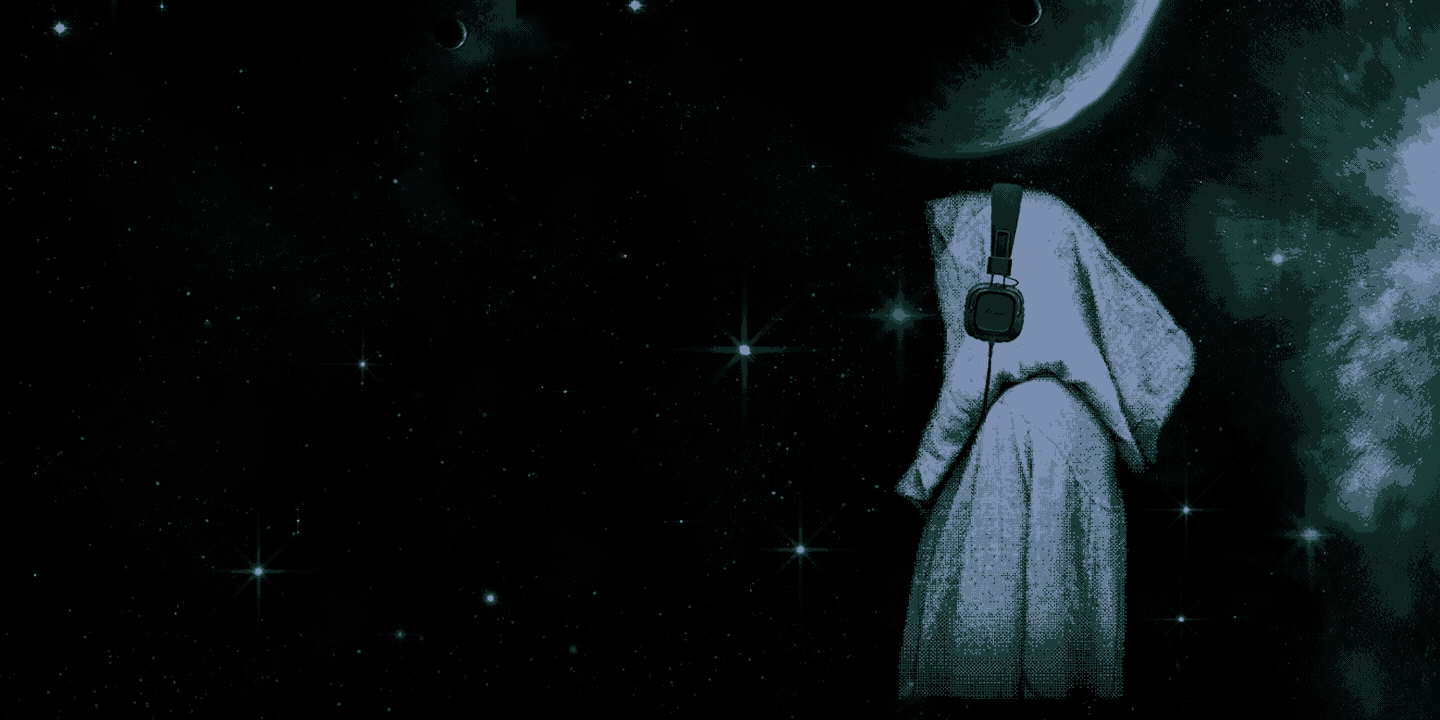
If rock stars are the sex gods of music, mastering engineers are its druids, the ones who work methodically and meticulously, and to whom people come for mystical wisdom and blessing.
Finding the answer requires an elusive combination of taste, equipment, and really excellent ears. Veteran mastering engineer Bernie Grundman has all three. A slight man with a high brow and a fondness for collared shirts, Grundman lives in Los Angeles, where he has kept his primary studio since it opened in 1984. The 72-year-old has worked with a roster of musicians that reads sort of like the all-time ultimate summer festival lineup: the Beach Boys, Leonard Cohen, Michael Jackson, Willie Nelson, Mariah Carey, Frank Zappa, Mos Def, Joni Mitchell, and many more. Janelle Monáe even shouted him out in her 2013 hit “Q.U.E.E.N.” rapping, “Mixing masterminds like your name Bernie Grundman.”
Grundman’s reputation as one of the first great modern mastering engineers comes in part from his unusual and meticulous relationship to mastering equipment. Unlike many of his contemporaries, Grundman works exclusively on hardware that he and his technicians have designed or customized in-house. The properties of every piece of hardware (and software) affect the sound of raw mixes, and it’s up to the mastering engineer to preserve the quality of that sound when transforming those mixes into the master file from which all future replications will be made.
When I asked Grundman about his commitment to one-of-a-kind gear—both digital and analog—he gave an answer that combined the technical with the metaphorical. “The way stuff projects and communicates is helped by the quality of your gear, and [our equipment] is cleaner than anything else out there,” he said. “When you only use computer stuff, everything starts smearing together, and a whole other mechanical aspect that isn’t musical creeps in. But the better the quality of your gear, the more the thing will sound real.”
Knowing what sounds “real” might be the most subtle, crucial part of the job. Say that the goal of most listening experiences is to feel as though you were there in the room with the music as it happened, to sit perfectly at the center of the music so that it can overtake you. Studio recordings have greater opportunity to be impeccable, because multiple takes and editing allow musicians to strip away the flaws latent in live playing—but those manipulations can quickly ruin the illusion, or the sound. Master something correctly and it will turn clearer, deeper, more enveloping, optimizing your ability to capture that ideal listening experience even out of crappy speakers or earbuds. Master something incorrectly, and the recording will spit you back out of the music, violating—in ways you can’t even consciously recognize—your understanding of how the music should “really” sound.

In the last few years, widespread access to some of the digital technologies mastering engineers use have called into question whether it’s necessary to take an album to someone like Grundman in order for it to sound good. In 2014, the Montreal-based firm MixGenius launched LANDR, a cloud-based mastering service that automates the mastering process using algorithms that detect genre, and allow you to select a specific style of mastering. The process is “instant,” and it costs between $2-20 per track, or a $9/month subscription for MP3 files; by comparison, mastering at a good studio can run as high as $500 an hour, though the fee for most mastering engineers lies somewhere in between. Users report that while mastering with LANDR might be better than nothing, the technology isn’t especially flexible or intelligent. You get what you pay for: a computer algorithm, rather than a live engineer with taste and experience.
Still, for young artists working on tight budgets, LANDR can feel like a godsend, and the technology fits neatly into a trend of DIY record making that challenges whether big studio resources are required to making great-sounding art. Even a high-profile artist like Kendrick Lamar recently released a collection called untitled unmastered. And the epilogue to Death Magnetic’smastering controversy is its own object lesson on the question of DIY: The same day that Metallica released the record, they also released its original stems to Guitar Hero 3, and players noticed that the video game’s versions sounded much better than the originals. Wily fans extracted raw audio from the Guitar Hero renditions and remastered the album, correcting what had offended them in the original mix and master. The result is now, in some circles, the “real” Death Magnetic.
The rise of DIY mastering on the cheap hasn’t rendered expert mastering obsolete so much as it’s revealed the salutary effect a truly gifted engineer can have on a project. A great deal of the mastering engineer’s power comes from her place in the life cycle: She is the absolute final person to affect the way music sounds before it reaches the public. “For us, mastering is the last chance to resolve issues about an album to make it more coherent, cohesive, and listenable,” says Drew Daniel of Matmos. “They’re also there to protect you from certain kinds of narcissism and flashy yet hollow ways of exaggerating your art.”
Emily Lazar, one of few women of prominence in this field, and the only woman to receive a Grammy nod for mastering work, explains the last-stop quality of a masterer’s job this way: “I try to achieve what an engineer, artist, or producer can’t do on his or her own. Sometimes that’s technical, but just as often it’s conceptual. People will spend a lot of time—years, even—mixing and remixing. After all of that time, an album can sound outrageously different from track to track, with new people coming into the process with their own ideas.”
In this sense, a mastering engineer is responsible for the kind of editing that’s especially crucial to any art made by many hands. Beyoncé’s Lemonade, for example, employed over a hundred collaborators, making the record’s cohesion a tremendous challenge—and emphasizing the importance of a stopgap for aural coherence at the very end of the project.
One musician friend of mine likened mastering engineers to expediters in high-powered professional kitchens: “They aren’t doing the cooking, but they can make sure each dish is right and adjust presentation or garnishes so the whole meal comes together.” The metaphor is apt, flawed only in that it underestimates the full range of what a mastering engineer is responsible for overseeing. While an expediting chef is presented with a set menu, a masterer typically has no idea what might be walking in the door from hour to hour. In a typical day, an engineer can work on anywhere between one and eight different projects in a range of styles and genres. So it might be more apt to compare someone like Grundman or Lazar to a roving expediter, dropping in on different kitchens throughout the day, each with its own cuisine, native ingredients, and staff.
Grundman was quick to note that he doesn’t select or screen artists, which means that anyone who wants to book with him can, assuming they find him available and affordable. “The main thing is you can’t be prejudiced,” he explained. “Each artist is giving you their insight into what they feel, and it doesn’t matter what kind of music it is. You have to allow yourself to get on that wavelength and get a sense of what you could do so that it connects more directly for the listener. You’re trying to contribute to the artist’s dream.”
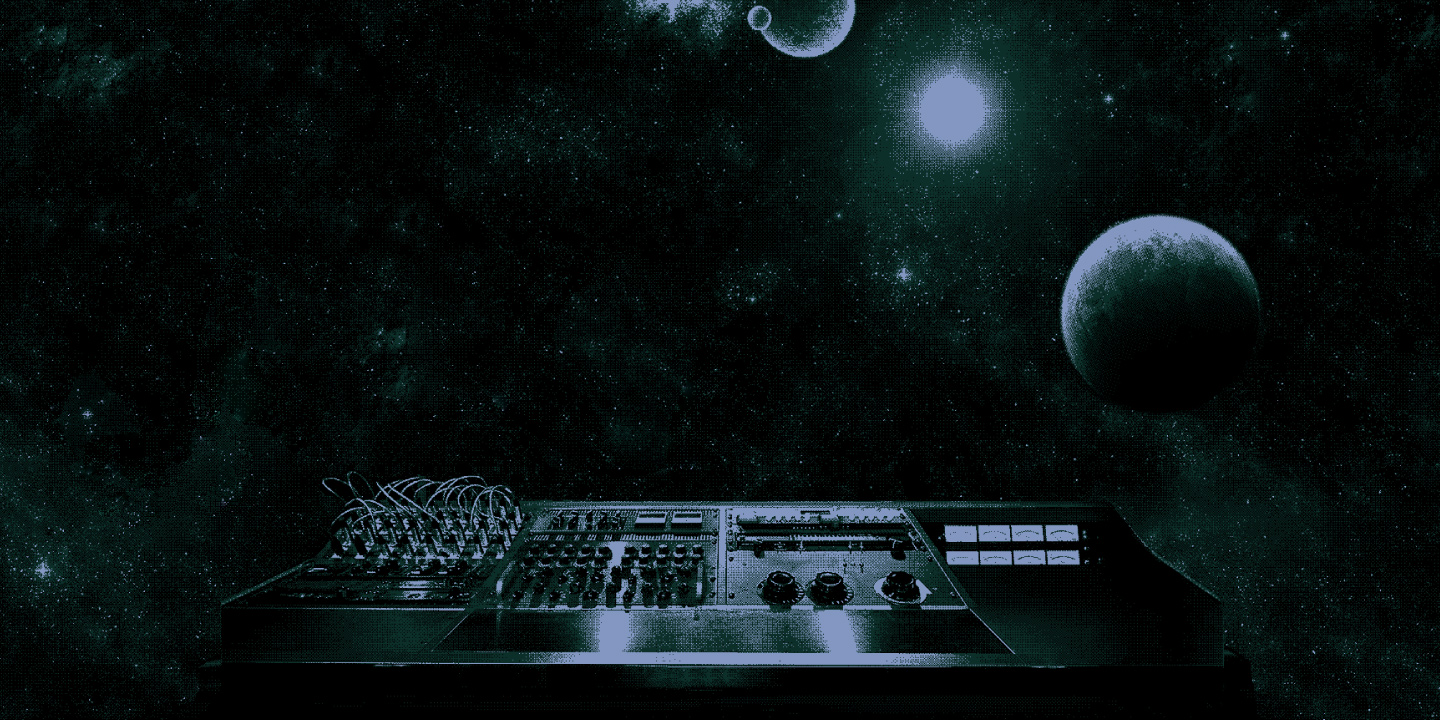
“I try to achieve what an engineer, artist, or producer can’t do on his or her own. Sometimes that’s technical, but just as often it’s conceptual.”
—Mastering engineer Emily Lazar
I met with mastering engineer Joe Lambert on a three-album morning: By the time I arrived, he had wrapped up an appointment with a local singer-songwriter at his studio in Jersey City, New Jersey, and mastered records for an Australian pop artist as well as a heavy metal band. His discography, like Grundman’s, is long and star-studded: Kanye West, Clap Your Hands Say Yeah, Alice Cooper, and Mandy Patinkin have all sat on his couch. Last year, he did the soundtrack for The Revenant. Gently graying in his forties with a tattoo of an electric guitar on his left forearm and black-rimmed glasses, Lambert was now waiting for a producer and artist to come work on an indie rock album.
The engineer bounced around the room amiably, offering a tour of his gear and playing bits and pieces from the morning’s work. A little after 1 p.m., a tan-skinned, thin-lipped, uncombed skinny man entered the room and introduced himself as Max. It was Max Drummey, formerly of indie-pop footnotes Chester French and best known for his brief tabloid marriage to the late Peaches Geldof.His producer, Tyler Wood, trailed behind in a military jacket. In the presence of his latest clients, Lambert’s energy shifted slightly—he became a little louder, a little jokier, vaguely more bro-y. He gave warm, firm handshakes and left the room to get some water as the two young men settled themselves on the couch, shuffling off jackets and unzipping their backpacks. Drummey shuffled around the room looking slightly frightened, inspecting the gear. I asked him what name he plays under.
He hesitated. “…Max?”
“It’s a debut album,” explained Wood.
Lambert reentered with a smile. “So, guys. Are we making a rock record?”
“Yeah, we’re rocking today,” Wood replied.
Lambert looked sidelong at Drummey, who was huddled several leagues deep in a gigantic woolen sweater of the sort you find in thrift stores in New Mexico. “Usually, the quieter the musician, the louder the record,” he said. Drummey ducked his head.
Lambert gave each song a first, diagnostic listen, tilting his head slightly to one side and nodding approvingly. Then, he played it again, his hands moving lightly over his board, turning dials back slightly, clicking here and there. As he made adjustments, the song would brighten, or Drummey’s voice would sound closer or farther away. Periodically, he’d turn off the track and turn to another computer, pulling up a few songs that shared a style or arrangement pattern with what Max was trying to do.
At one point, Wood interrupted to ask, “What is that reference you played? It’s perfect, it’s humbling.” It was “The Suburbs,” by Arcade Fire.
After a few listens and some minor fiddling with one track, Lambert paused and swiveled to face the two men behind him. “It’s tough because if we’re gonna leave the vocal this loud we’re gonna need more bass.”
“My concern is that it’s getting over-compressed,” Wood interjected.
“Yeah, that’s me adding more bottom,” Lambert explained, adjusting the vocal track. “Your voice made me wanna boost it, but then the track felt duller, so if we take your voice down a little…”
Max: "Dictionary" (Unmastered Version)
Max: "Dictionary" (Mastered Version)
Throughout their conversations, Lambert remained as jocular and affable as a Little League coach, eager to offer his expertise but not emotionally invested or interested in handing out orders. At one point, he put two hands on Drummey’s thin shoulders and gave him a gentle shake, as if to help him break through his shyness. In addition to his expert ears and technical adjustments, he also offered avuncular kindness, musical and social intelligence. He was, as Emily Lazar put it, “nailing the right vibe.”
The songs blurred into each other. “I’m gonna go take a wee,” said Drummey, standing suddenly. “Don’t tell me what you did, just do what you think is best.”
Once he left, Lambert turned to Wood. “Now that the low end is clean, it sounds much wider to me.”
They listened on repeat for a while.
“Hear that guitar? That overtone? It just wasn’t there before,” said Lambert.
“Yeah, it’s those overtones that make the guitar good or bad,” Wood replied.
“That’s the good spot.”
The two nodded, satisfied.
Just then, Drummey popped back in. “Is it perfect now?”
Yearbook: How Chicago Became the Epicenter of the Alt-Country Boom in 1998

“I shoulda moved to New York city, but I never was that cool/ I just languished in the Midwest like some old romantic fool” —Freakwater - “My Old Drunk Friend”
Even those who watched grunge die have a hard time pinpointing the time of death. The exact date when the grim reaper placed its bony finger on the first disaffected, flannel-shirt-wearing stereotype remains lost to a cold stew of opinions and a confluence of corporate maneuvers. Here lies grunge: Interred in a bone-white crypt engraved both with Kurt Cobain’s opening line of In Utero, and a sketch of Korn playing Lollapalooza in 1997.
The late '90s live in this strange lacuna between the end of the monoculture and the beginning of the internet. Picture this hermetic moment of paranoia and self-reflexivity, where after seeing the corporatization of countercultures throughout the ‘90s, everyone knew nothing sacred could remain sacred for long. In fact, rock music in ‘90s was defined not only by its countercultures, but by how quickly those countercultures were co-opted by the mainstream. Just as the Seattle grunge scene famously inflated and exploded, so too did riot grrrl become another curio maligned by the media, much to the chagrin of the feminist punks who started it, and then suddenly the radical notion of “girl power” became associated not with Bikini Kill, but with Tracy Bonham and The Spice Girls.
While the mainstream stalked the margins for the next music phenomena, Chicago, for the second time in its civic history, became a bastion of country music. Thanks in part to British art-punks The Mekons, the launch of Bloodshot Records, and the continued success of anything Jeff Tweedy touched, “insurgent country” and “alt-country” became Chicago-based sobriquets. And sure enough, by 1998, alt-country became the next genre de jure upon which major labels wanted to prey.
But a corral of Chicago artists battled through those times to continue to record some of the finest Chicago country today, including Robbie Fulks, Jon Langford, Freakwater, and more, all guided and inspired by Chicago’s collectivist ethos. “We didn’t start this label because we hate shitty country music,” says Bloodshot founder Rob Miller, “We started the label because we hated the shitty rock ’n’ roll that was appearing everywhere.”
None of this would have happened if it weren’t for the first time Chicago became a bastion of country music, almost a century earlier. What started as an out-migration of the Appalachians and Mid-South in the early 20th century, turned into an emigration event large enough to earn the name "Hillbilly Highway.” White, southern families made the pilgrimage up through the Midwest and settled in urban and suburban neighborhoods across the Chicago metro area alongside millions of African Americans seeking industrial jobs and work in the city’s stockyards.
A few of these hillbilly migrants from down south helped spur the start of Chicago’s famous bi-weekly radio show, the “WLS National Barn Dance” which began broadcasting in 1924. Throughout the ‘30s and ‘40s, the pointedly nostalgic show (think “Prairie Home Companion” but even more noxiously sappy because this was, after all, an anathema to the Great Depression) reigned supreme as the most popular country music radio broadcast throughout country. Millions tuned in every week to hear Gene Autry and other pickers and crooners sing patriotic, family-friendly songs and tell truly awful knee-slappers. Cities all across the nation saw the success of Chicago’s Barn Dance and wanted to have their own weekly country-based variety show. One of those cities was Nashville, whose “WSM Barn Dance” would later overtake the Chicago original in popularity and influence when it was renamed the Grand Ole Opry.
However, in downtown Chicago, a seamier side of hillbilly life was cropping up along Madison Street. By the late ‘40s, a half-mile block in Downtown along Madison became known colloquially as the “Tennessee Valley”, with bars like the Southern Inn, Wagon Wheel, Hillbilly Hayloft, and as many as a dozen honky-tonks were erected to serve this hillbilly diaspora. They were home to a rowdier, more sinful side of country music. These haunts catered to the class of hillbillies in Chicago for whom the coddling, Christian tunes of The Barn Dance belied the roots, twang, and lifestyle of their former homes. As detailed in the book The Selling Sound: The Rise of the Country Music Industry, this hillbilly country, this roadhouse honky-tonk music spilling out of these displaced watering holes in Chicago (as well as in Detroit, Nashville and Southern California) would go on to popularize the sound of country radio over the next few decades.
It was these honky-tonk artists—George Jones, Ernest Tubb, Merle Haggard, Patsy Cline—that Chicago WZRD radio DJ Terry Nelson recorded onto a mixtape one day in 1983. Nelson made the tape with the intention of giving it to one of his favorite musicians, Jon Langford, lead singer of effortlessly eloquent post-punks The Mekons, who at that point was living in Leeds, England. Being a big fan of The Mekons' early records, Nelson thought the tape would show Langford how much he already had in common with honky-tonk.
“We didn’t think we liked country music much,” says Langford, who, after playing Nelson’s mixtape, began to see the natural connection between his UK punk roots and America’s country roots by listening to these stories of death, booze, lust, and loneliness. The mixtape was a direct influence on The Mekons’ breakthrough 1985 album, Fear and Whiskey.
As much as Fear and Whiskey is afire with anarchist, anti-Thatcher, anti-Reagan sentiments, it’s also loaded with fiddle, harmonica, the ghosts of honky-tonk legends, and a beautifully inept Hank Williams cover. It became apocryphally known one of the first alt-country albums, not by meaningful design, but because a bunch of punks got a hold of a mixtape with some Merle Haggard on it.
“We were never trying to imitate country,” says Langford. “Fear and Whiskey doesn’t sound anything like country music to me, but there was imagery and osmosis. It sounds like a bunch of punk rockers from Leeds not really knowing how to play country music.”
The Mekons found success in America quite literally sort of playing country music, and soon after touring in the U.S. for a few years in the late 80s, Langford wanted to move permanently to the States. “We had this reputation after Fear and Whiskey being somewhat influenced by country music,” says Langford, “and what I couldn’t find in Nashville or Memphis or anywhere else, it was in Chicago.”
In Chicago, Langford became pals with one of the last holdovers from the preeminent downtown hillbilly scene, the city’s country institution The Sundowners. It can’t be overstated how important The Sundowners were for keeping the wind in the sails of classic country while almost every other music genre imaginable found its foothold in Chicago. From 1959 to 1989, the trio of Bob Boyd, Don Walls, and Curt Delaney took up residence at the shit-kicking Double R Ranch, which used to be on the infamous Madison St. before it moved to the corner of Randolph and Dearborn in the basement of old Woods Theatre building in the ‘70s.
The bar was reminiscent of the old honky-tonks that decorated Madison Street years ago, a respite for both city slickers and southern transplants who wanted a taste of something down-home, even advertising the “world’s best chili.” Longtime Chicago country singer and guitarist Robbie Fulks played there regularly from ’84 to ’89, and recalls that it was “a real pit”, adding that the advertised chili was an “emetic concoction,” but the music that came out of there until 4 or 5am was nonpareil.
Four nights a week, The Sundowners would play country, folk classics, and sometimes modern-day radio hits with three-part harmony and an unwavering precision. As legend has it, by the end of their career when they had moved out from the Double R to their own Sundowners Ranch in the suburb of Franklin Park in the ‘90s, the band knew over 25,000 songs. But on his first on his first tour of the U.S. with the Mekons back in 1986, the Langford was at a poverty for country songs at that point. He sat in with the three country icons one night after a Mekons show at the Cubby Bear.
“It was kind of a wild thing for us to do,” recalls Langford, “and we weren’t entirely good at it. So I decided I’d go away and learn some of the Cash songs we were involved in, so that the next time I went back I could do something sensible in front of a potentially hostile white redneck crowd on a Saturday night in Chicago. That was where the Waco Brothers came in.”
Langford would become a regular with The Sundowners, so much that the trio played Langford’s wedding in 1991. To dive deeper into his love for Country, Langford started the hell-raisin’ Waco Brothers as a bona fide county bar band in 1994, while the Mekons continued working outside the status quo for the rest of their career.
The sonorous connection with Mekons faking their way through the country fakebook and the roots of country traces back to the days of Johnny Cash. Not only did Langford initially release Fear and Whiskey on his own label, Sin Records (a play on Sun Records, the Memphis label where Cash recorded), but the tenets of punk ran thick in the veins of Langford and Cash.
“I don’t have a hard time drawing a direct line between The Dead Kennedys and Johnny Cash Live At San Quentin,” says Rob Miller. “Johnny Cash’s guitar player Luther Perkins, he couldn’t play. You listen to those iconic early Sun sessions of Johnny Cash and those simple guitar runs, that wasn’t a ‘studied minimalism.’ He couldn’t play. It fits in perfectly with that aesthetic.”
Before he lived in Chicago, Miller came to town to see Dwight Yoakam and Buck Owens at the downtown Chicago Theatre. A friend told him that they should go around the corner to the Double R and see The Sundowners. That show changed him for good. “I thought this is an amazing place I should move to this city one day.”
A few years after Miller moved to Chicago in 1991, he met Bloodshot co-founder Nan Warshsaw spinning records at what is now the punk whiskey bar Delilah’s. As fans of typically local, typically country, typically punk music, Warshaw and Miller (along with Eric Babcock, who parted ways a few years later) decided it was a good idea to start a label with little to no forethought. “It was that late ‘70s punk mentality of ‘Here’s three chords now start a band.’ It was, 'Here’s three music fans who are incompetent musicians, let’s start a label. Why not?’”
In what would come to define the insurgent and alternative bent of Bloodshoot, Miller’s history with country was more connected to the cowpunk and rockabilly, a fondness of The Mekons, X, The Cramps, The Gun Club, and The Panther Burn. But as they started to put together their first compilation for the label, which was going to feature exclusively country and folk acts from Chicago, the punk influence made sure that Bloodshot was going to be a buckshot to status quo, and another key ingredient to the other idiosyncratic Chicago labels Thrill Jockey and Drag City.
What came out of the late night boozing and crate-digging was For A Life Of Sin: Insurgent Chicago Country, Bloodshot’s first comp released in 1994, featuring a coterie of Chicago country artists like Freakwater, Texas Rubies, Moonshine Willy, inimitable album art painted by Jon Langford, and a song called “Cigarette State”, which Miller found on a Sundowners record from the ‘80s. It turns out it was actually written by Robbie Fulks. Bloodshot asked Fulks to re-record it for the comp, and after over ten years of hustling, sending demos to major labels in Nashville, Fulks signed with Bloodshot, who released his debut album Country Love Songs in 1996.
Like clockwork, it was time for the counterculture to become a trend. The sometimes sweet often bitter songs on Fulks’ Country Love Songs and his 1997 Bloodshot follow-up South Mouth caught the ears of several major labels looking to give Fulks a well-deserved signal amplification and wide distribution. The timing was perfect: Wilco’s had a hit with their second album Being There in 1996, Ryan Adams’ band Whiskeytown just signed to a major label in 1997, as did Chicago singer Jay Farrar’s Son Volt. Alt-country was having its grunge moment.
“After I signed with Geffen, little remarks came up that we weren’t quite on the same page,” recalls Fulks. “An A&R guy said, ‘We want you to listen to this Ryan Adams record because he’s like you, and he’s a good writer, and we want you to be inspired.’ This idea that there was this peaking trend out there and I would be their guy. Ryan Adams was on one label, Jay Farrar was on another, and I would be that guy at Geffen. It wasn’t an offensive idea, maybe it was a predictable idea looking back now, but it wasn’t what I wanted.”
Fulks’ 1998 major label debut Let’s Kill Saturday Night was a slick record, with harder edges and a more electric rock feel than what he had done on Bloodshot. But after Geffen merged with Interscope, Fulks was left out of the fold and went back to his home at Bloodshot. During 1998, Bloodshot put out mostly 7-inches because many bands were trying to ride what was once the ebb but now the flow of alt-country. Miller recalls being at CMJ music festival and having a major label try to take The Waco Brothers from him for $75,000. Miller laughed.
“Labels were signing bands that didn’t even play the banjo but just had one in the van,” says Miller. “Two years before, bands were like, ‘Wow there’s a label dumb enough to put out our record and get behind this.’ Two years later it was like, ‘Yeah we wrote four songs and we bought a dobro the other day so we’re waiting for Geffen.’ We thought we’d be done.”
Bloodshot weren’t, of course. They were home to Neko Case's debut The Virginian in 1998, released after Case moved to Chicago to be apart of the city's collectivist mindset. In 2000, the label released Ryan Adams’ debut Heartbreaker, one the the best-selling records on the Bloodshot catalogue (the label’s license on the album expired in 2013, and Pax-Am records released a deluxe reissue of the album earlier this month).
The coda of Chicago’s second dance with country music should focus on the famous and acrimonious release of Wilco’s Yankee Hotel Foxtrot in 2002. It was a full dissimilation from the band’s alt-country roots to something definitively their own, as well as a tale of major label woes. It was everything the alt-country boom was in one album, something seeking to disassociate from the mainstream, and something that jettisoned Wilco to something much bigger.
But in truth the country scene carries on in Chicago, always in flux and in bloom at Carol’s Pub in Uptown or FitzGerald’s in Oak Park, with Robbie Fulks, The Waco Brothers, and Freakwater all putting out records this year, all on Bloodshot. Bands like those, and the rest of Bloodshot’s increasingly eclectic lineup of dusty punks have been around the world, on labels across the city and country, but still call Chicago their home. It became the melting pot, a communal space, the very ideology of punk, that let country flourish.
“It wasn’t like New York or L.A. where you just felt everything was a business and everything was like grinding to the next commercial success,” says Langford. “Chicago was a place that actually had the space to support people to do what they wanted to do.”
Greil Marcus' Real Life Rock Top 10: I Need to Scream: What It Means to Be a Fan

Longform: Is the Era of Free Streaming Music Coming to an End?

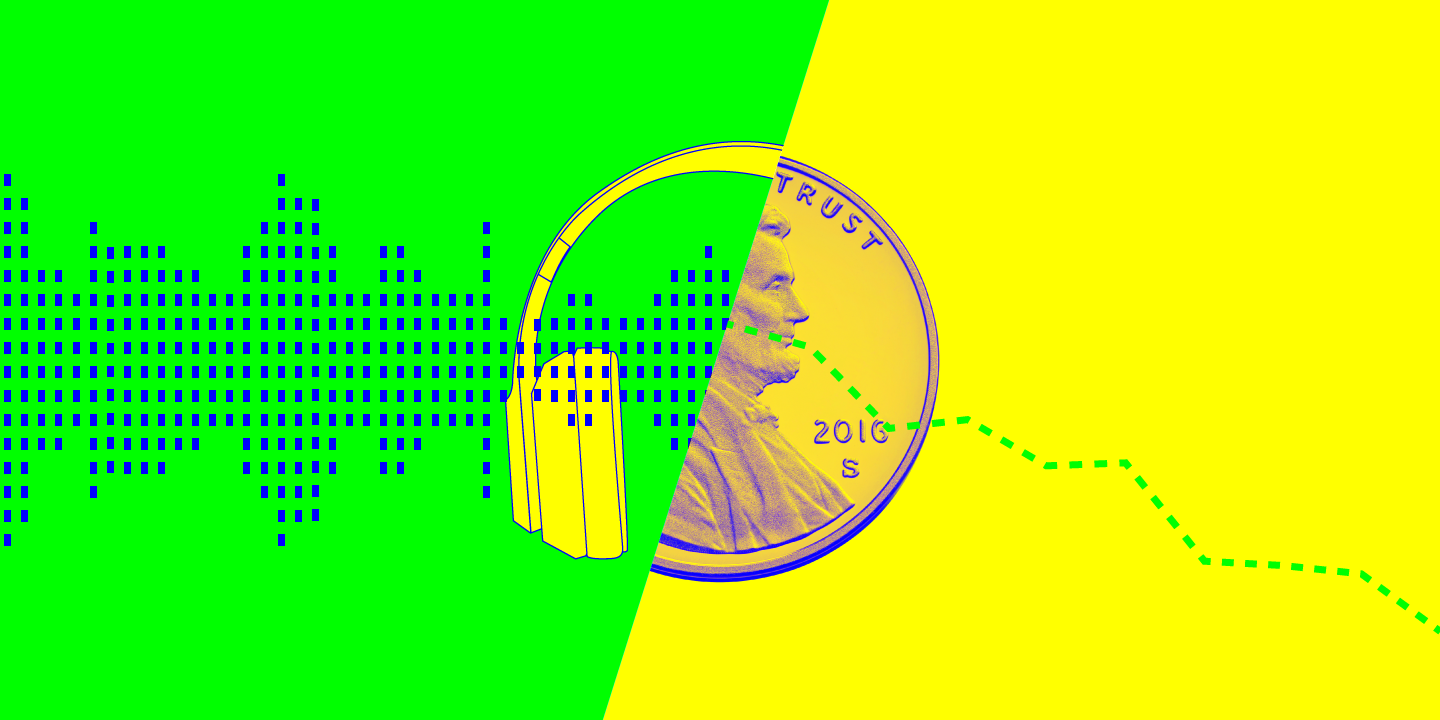
Those who share a birthday with Napster—which launched June 1, 1999—are turning 17 today. It’s an age when music often means the world. How differently, though, are these digital natives hearing their favorite artists compared to listeners from decades past? There’s always a risk of exaggerating the changes facing younger generations, but the shift undergone in this millennium feels less ephemeral and more profound than, say, transitioning from cassettes to CDs. This is because music is now free.
Before Napster, to hear whatever you wanted, whenever you wanted, you had to pay for it. Pirated music still exists, of course, but the real breakthrough for the music industry over the last decade has been free, ad-supported streaming. Vast libraries of songs ready at a click’s notice? Personally customized online radio stations? It’s all there, all the time—on car trips, in the shower, while sleeping or partying or working out or studying—and it doesn’t have an obvious cost.
Stone Mills, a 21-year-old musician at The Evergreen State College in Olympia, Washington, tells me that although he prefers playing vinyl or tapes, almost of all his current listening happens via YouTube. “Nowadays, my expectation of finding music on the internet for free is so high that I feel slightly offended when I can’t do it,” he says. “It’s kind of a warped mindset, actually.” It’s also, no doubt, a common one.
For all the debates about the paucity of payouts to music makers, with ad-supported streaming—unlike with piracy—at least those payouts exist. But now, the industry may be rewriting its compact with free streamers. Streaming services appear to be approaching a point of rebalancing as they try to maximize advertising revenues from the many who don't pony up for monthly subscriptions while at the same time finding new reasons for potential customers to pull out their credit cards.
Glimmers of what this realignment could mean for artists and listeners are already becoming evident. People who make music may eventually start to see their payouts from free streaming rise as services spread and advertisers follow—though it’s hard to see how those amounts will ever compare with the sales of old. People who listen to music, meanwhile, may want to get used to not being able to hear every major new release (legally) without paying for the privilege.
The problem, as Tim Westergren, founder and CEO of web-radio giant Pandora, tells me, is locating the right middle ground, where there’s enough free music to encourage paid subscriptions but not enough to condition audiences to stop paying altogether. “We’re heading into a period of reckoning, where the industry is going to make some decisions about what really makes sense,” he says. “It can’t go on as it is.”
The ability to stream music online without paying for it has been under threat for a while. In late 2014, after Taylor Swift’s high-profile decision to withhold her album 1989 from Spotify in the wake of proclaiming that “music should not be free,” a Sony Music exec reportedly said the label was re-evaluating its support for free, ad-supported streaming. By March 2015, major label sources were saying that “we need to rethink free.”
More than a year later, the practice hasn’t gone anywhere, but the business around it has evolved. Streaming companies that previously used to offer only free, ad-supported services, like YouTube and SoundCloud, have started providing paid-subscription options. Pandora, which provides online radio rather than songs that can be streamed on-demand, has undertaken an acquisition and a change in management. Apple Music and Tidal entered the on-demand streaming fray, both without a bona fide free tier. Moreover, the record industry has—for now, at least—shifted its crosshairs from Spotify to the biggest music streaming service of all, YouTube, in a battle over copyright law.
It’s an open secret that YouTube, the Google-owned streaming video giant, also happens to be the world’s most popular site for streaming music. A recent nationwide survey found that 53 percent of respondents had watched music videos or listened to music on YouTube in the last month. That compares with 32 percent who listened to Pandora, and 13 percent who listened to Spotify, the leading music-only services. What’s more, among younger music fans in particular, a vast majority—86 percent—said they used YouTube to satisfy their musical needs.
YouTube, like Google’s search engine itself, has long been free to users, supported by targeted advertising. Last October, the company unveiled YouTube Red, a new paid subscription service that offers ad-free viewing and listening. At the same time, YouTube also announced a new app that filters out YouTube’s non-music content and includes the usual 30 million or so tracks found on other streaming services, plus the vast array of live clips, remixes, and other musical ephemera found on YouTube. The free app is ostensibly separate from YouTube Red, but if you want to use it in most real-life circumstances—like when your screen is off or while using other apps—you’ll have to pay.
But as YouTube moves into the paid subscription business, it’s hardly abandoning its bread and butter. When asked about the near future of free music streaming, Robert Kyncl, YouTube’s chief business officer, tells me, “What’s next is more ad revenue coming into it.” For instance, the advertising conglomerate Interpublic Group recently revealed it was shifting $250 million in TV ad spending to YouTube. Kyncl suggests advertisers could increasingly take money off traditional radio, too, and put it on the service’s clips. The record industry’s business model always differed from TV and radio in that fans bought specific songs or albums, but now it’s being tied into that same advertising-based model through free streaming.
“The music industry as a whole hasn’t earned that much from advertising, and now that’s changing,” Kyncl says. The reason industry coffers haven’t previously spilled over with ad revenues is partly a quirk of U.S. copyright law. Unlike in some other nations, radio broadcasters here pay royalties only to the songwriters, not the labels that own the recordings. But on-demand streaming service providers like YouTube and Spotify must pay both types of royalties. So, according to Kyncl, as listening goes from analog to digital, the music industry can look forward to a bigger share of the revenue from a larger market. In other words, labels—and artists who own their own master recordings—have gone from “monetizing only the super fans, by selling them CDs and LPs and tapes, to making money through ads from everybody that enjoys music,” he explains. “And that’s a big deal.”
Exactly how big of a deal—and who will benefit from it—is up for debate. Kyncl’s comments come as trade organizations for the record industry have been waging a public relations battle with YouTube. In April, the U.S.-focused RIAA and the global IFPI both issuedreports complaining of a massive “value gap” between the amount of free music streamed on sites like YouTube and the money returned to copyright owners. Meanwhile, a host of acts, from Katy Perry to Arcade Fire, signed letters calling for changes to a 1998 law that protects sites like YouTube and SoundCloud from copyright infringement lawsuits when, say, someone uploads a leaked Taylor Swift song. YouTube responded that many of the arguments against it were unfair and said it has paid out more than $3 billion and counting to the music industry so far: not chump change, but still, a relatively paltry sum compared to the more than $20 billion in inflation-adjusted revenue the U.S. record industry generated at its peak in 1999. What result, if any, will come of the clash with YouTube is unclear. Neither side is challenging the basic concept of free, ad-supported streaming as a moneymaker; they’re fighting over their share of the pie.
Despite the gains from streaming, that pie has shrunk by more than half over the last 16 years. The U.S. recorded music industry brought in overall revenues of $7 billion last year, up almost 1 percent from 2014, according to the RIAA. (Globally, revenues had their first significant uptick since the ’90s.) But industry sales have been hovering around this level since 2010. And that overall stasis masks an underlying swing in listening habits. This year, for the first time, streaming generated the largest share of revenues, at slightly more than 34 percent, inching ahead of digital downloads. In early May, Warner Music Group became the first major label to boast that streaming is now the largest source of revenue in its recorded music business, though that was partly offset by ongoing declines in physical sales.
In 2015, with Tidal and Apple Music making splashy debuts, the biggest and fastest-growing source of streaming revenues was from paid subscription services, which accounted for $1.2 billion. The nonprofit SoundExchange, which distributes royalties to artists and copyright holders who are played on Pandora, SiriusXM, and other digital radio services, paid out $803 million. By comparison, on-demand, ad-supported services like the free tiers of Spotify and YouTube represented just $385 million. As the RIAA didn’t hesitate to point out, that was less than the estimated retail value of vinyl album sales. (U.S. radio revenue last year, meanwhile, was more than $17 billion.) So yes: If free streaming keeps drawing advertisers, there will be more money. But the industry will need to bring in a lot more to return anywhere close to its heyday.
In March, SoundCloud, another free, user-upload streaming site, introduced its own paid subscription service, SoundCloud Go, and the company’s CEO Alex Ljung also sees free and subscription components as necessary complements to each other. “Music is something that you have the chance of reaching billions of people with,” he tells me. “Subscription will be really big, but you’re still not going to get all those billions of people into subscription. You don’t want to leave that on the table.”
As SoundCloud was reaching its deals with labels for the new service, some users complained of having their uploads unexpectedly taken down. More recently, NPR noted concern that dance DJs and producers may no longer be able to use SoundCloud for their mixes and remixes. Ljung acknowledges a need to respect rights holders while at the same time allowing remixes and other “derivative works” to keep proliferating, but he casts SoundCloud’s industry agreements as a boon. “It’s really a step forward both in terms of compensation for artists, but also for enabling more creativity,” he says. For instance, SoundCloud recently announced a free music mastering service. As Ljung describes it, going legit will result in fewer takedowns, not more, and the music that stays up will now generate actual money. The community drawn to SoundCloud by its DJ mixes surely hopes he’s right.
But perhaps the most dramatic transformation in the free streaming world is taking place at Pandora. Unlike Spotify, YouTube, or SoundCloud, Pandora is an internet-radio company, not an on-demand streaming service, so different copyright rules apply. That’s why certain artists and albums are sometimes available on Pandora but not on most streaming services, including single-platform exclusives like Drake’s VIEWS or Beyoncé’s Lemonade. “Monetizing free audio listening is a fantastically difficult problem to solve," Pandora’s then-CEO Brian McAndrews said last June, "and we are alone in solving it." While the company fell $170 million short of a profit in 2015—partly blaming the loss on licensing costs it has to pay that terrestrial radio doesn’t—it still managed to generate $1.16 billion in revenue.
And while Pandora offers an ad-free, paid tier, 80 percent of its revenue last year came from the advertising on its free streaming option. Still, the company is in the midst of a substantial makeover. Last November, it bought the scraps of bankrupt Spotify rival Rdio, giving it an entree into the on-demand space. Pandora has also diversified beyond streaming, acquiring concert ticket service Ticketfly back in October and music analytics company Next Big Sound earlier in 2015. Then, in a surprise move, Westergren replaced McAndrews abruptly this past March as CEO.
Westergren confirms that Pandora’s on-demand offering is in the works, but he says that “isn’t a pivot away” from the online radio business “at all.” And he’s careful to differentiate free radio, which has existed for nearly a century offline, from the free on-demand streaming on offer from Spotify and YouTube, an area where he sees more potential pitfalls. “You’re training people not to pay for music, really,” he observes.
For that reason and more, ad-supported streaming remains under pressure. “Free on-demand music services are not working really for anybody, except the consumer, of course,” says Jon Maples, an industry analyst and veteran product executive. “It doesn't work for the content creators, because the drips of pennies that come out of the payment machine are laughably small. It doesn't work for the content owners and distributors because it has totally gutted the retail products. And it doesn't work for the services because of the enormous cost of the content.”
But even with all of its imperfections, virtually no one expects free streaming to go away. “Free has a purpose,” Vickie Nauman, founder of the digital music consultancy Cross Border Works, tells me, noting that it has helped direct listeners toward paid services. Michael Sloane, co-founder of Streaming Promotions, a Nashville-based startup that pitches independent labels’ songs to user-generated playlists, contends that labels aren’t doing enough to point audiences toward streaming. “We as an industry continue to push toward this download model, where everything goes into the iTunes store,” he says. “You gotta go where the fish are biting, and right now the fish are biting at Spotify.”
Allen Bargfrede, an associate professor at Berklee College of Music, predicts “continued subtle shifts” for free streaming. He says putting some music behind a paywall may be a smart move for the industry and streaming companies alike, noting the more than 250 million streams Tidal claimed for Kanye West’s The Life of Pablo in the first 10 days of its (essentially Tidal-only) release. “The exclusive angle seems to be working,” Bargfrede says.
The concept of exclusivity goes far beyond releases limited to a single platform when they first drop. In addition to the user-uploaded content on YouTube or SoundCloud that exists nowhere else, YouTube, for one, has been nurturing new music talent with its YouTube Music Foundry program. As for “derivative works,” Apple Music and Spotify have each struck deals with digital music distributor Dubset to make remixes and DJ mixes available to stream legally, though how that will work out in practice remains unclear. And Spotify is working on original video series with such stars as actor Tim Robbins and Def Jam Records mogul Russell Simmons. “Music will always be most important, but our audience wants more from us,” Spotify’s content partnerships chief, Tom Calderone, has said.
Spotify, for its part, declined to comment on the record about what changes it might make, if any, to its free tier, such as potentially allowing artists like Swift to make their music available only to paid subscribers. Last December, during negotiations over Coldplay’s album A Head Full of Dreams, Spotify reportedly showed a new willingness to let the band limit access to the record to the paid tier for a time, an approach known as windowing, but the record ended up being released on the free tier as usual. And, in a statement to Pitchfork, Jonathan Prince, global head of communications and public policy at Spotify, echoed other services’ arguments that free, ad-supported streaming will eventually generate more money for music.
But some industry watchers tell me it’s almost inevitable that free streaming will be increasingly curtailed as the overall streaming market matures. “At some point, it’s got to become rationalized,” Pandora’s Westergren says. “A perpetual free option doesn’t make for a viable music industry—what are you telling people about the value of music? You need to give them an alternative that’s attractive, reasonably priced, and fits the way they want to consume music. That is the holy grail.” For fans, artists, streaming services, and the music industry as a whole, the search continues.
Rising: Joey Purp and the Responsible Party

From Our Partners: French singer-songwriter Lou Doillon on love, music, and how to upset your boyfriend


When Lou Doillon released her debut album, Places, in 2012, she was already a star in her native France due to a combination of family (her mother is Jane Birkin, Serge Gainsbourg’s best-known collaborator and a fashion icon), and profession (a long, successful career as an actress and sometimes model). But Doillon was still genuinely surprised when she found an audience for what she calls her “broken voice.” Certainly her work chronicles plenty of broken hearts, with love – the non-Hallmark variety – being a major theme of the torch songs and moody pop which characterize her work, including Lay Low, the sophomore effort she is currently touring to promote.
Doillon has also made a brief return to acting, appearing in a new series of short films by Palo Alto director Gia Coppola, which were a collaboration with Gucci creative director Alessandro Michele to showcase his pre-Fall collection. The films retell the ancient Greek myth of Orpheus in modern-day New York (set to music from Devonté Hynes and others). The myth of Orpheus is a tragedy about love: Based on Doillon’s recorded output, she must have felt right at home with the material.
When did you start playing guitar?
I started playing the guitar very late, I used to steal my boyfriends’ acoustic guitars when they weren’t around, until a friend of mine gave me one – a pretty basic blond Yamaha. It’s the most accessible instrument and has a troubadour quality, as opposed to a piano, since you can take it everywhere and it doesn’t require special care. I learned the guitar because I wanted to sing. It was a way of processing the day and the adventures I’d been living. I need to archive the days and feelings that go by.
What themes do you tend to write about?
I write for, about, looking for, in the name of, in lack of…. Love. What else is there to write, sing, draw, paint about? It seems simplistic, but I think that’s the backbone. And often, the more personal I am, the more universal it is. We have so many bridges between us that I’d rather focus on that than our differences.
You sing in English – talk about your relationship with that language
It’s a great pleasure to talk two languages, because they reveal a culture. My knowledge in both is not at all symmetrical. In French, there is a passion for ambiguity, double meanings and precision. It’s impossible, for example, to write a sentence without announcing the fact that you are addressing a male, a female; impossible not to reveal, since we have many nuances of tenses, whether you are talking about something that you wish had happened, that might have happened, that has happened in your imagination… which says a lot about the French! Objects have sexes, and there are other strange and wonderful concepts. English, for me, especially in songwriting, has an “open” quality. One can play around with simplicity, and things can remain hidden. It’s like writing with mist.
Was there a lot of music in your home growing up?
Not in my mother’s house funnily enough [Doillon’s mother, Jane Birkin, sang, very famously, with Serge Gainsbourg], but in my father’s [filmmaker Jacques] a great deal. He has always approached his director’s craft like the work of a conductor. He would listen to takes, and not look at them, believing that the image could lie but not the rhythm or pace of the actor. He would listen to music religiously. One would sit and not do anything but listen. I guess he transmitted his love for “truth" to me. Even if he doesn’t speak a word of English, he could hear if the singer was letting go, or holding on. Thus we’d listen to Leonard Cohen, Patti Smith, Nina Hagen, Nusrat Fateh Ali Khan, Siouxsie Sioux…
How is your most recent release different than your previous work?
I think my latest album has been influenced by my live experience. I wanted to record live as much as I could, and be very sparse with my choice of instruments and techniques. I recorded with Taylor Kirk and his band Timber Timbre in Montreal, in the thick of the snow and winter. I worked around silence, and the rhythm that’s inherent to the instruments. He taught me how to work with my own imperfections as opposed to digital perfection.
Are you a perfectionist?
Yes! Even if that implies working within my imperfections. But I’m very much a craftist – is that a word? – or an artisan. I need to work a lot to get to a place that seems effortless. I rarely know what I want, I have to try many different things to adjust, and then I realize what I don’t want. Which is a starting point!
When you write and record, do you restrict yourself to ideas that can be played live?
No. I would say that the only restriction I have when I write is to try and find the thin line between the universally personal and the strictly personal that should be played on a couch with a shrink more than on a record. I often use my friends or family: When I write a song about being jealous and my boyfriend gets offended thinking I’m taking the piss, or my mother thinks I’m judging her, and my best friend is furious I could write a song about her… Then I know it’s a good song.
You’ve been an actor and a model, and now you’re a band leader. What’s it like being the boss?
It’s been very interesting. I guess the best and worse thing about being a leader is the responsibility factor. I think I realized the burden of it when I decided the album was finished. It’s a terrible thing to stop something in motion. To accept that this is what it is, we could go on and on for ever, but one has to stop and call it a day. And then there is the human factor: When you are a leader your relation to doubt can be very frightening for your team. One has to make decisions, rather than wait around. I often think of my grandfather who was a captain for the British navy. He would tell me, "Never tell them you are lost; give a direction and keep looking."
What do you get from acting that you don’t get from music?
Something childlike for me, the desire to please, and surrender to a “world” that’s not mine. Forget about myself, and try all my best to be a tool, to be part of someone else’s process.
How did you get into acting?
I wanted to act to meet my father, who’s a director. In daylight he was very austere, and I knew from the tales that he was a different man on set. I wanted to be part of his world, and be a tool helping get to a result. That’s where it came from, and then the feeling remained, even if I was working for other directors.
How was the experience of doing the Gucci videos?
It was fun to get back to a movie set, and find myself in an adventure that I was not controlling. I wanted to do it to meet Gia [Coppola], whose work I respect and admire. And filming in New York was a great experience.
It was your first acting gig for a while – how did it feel?
Strange at first, such a different set-up! The team was huge and I was overwhelmed by the beauty of the team, cast and wardrobe. After months of living in a van or a bus with one suitcase, I felt like Cinderella. The costumes were beautiful, and I felt like a vehicle for all that beauty.
Where are your favorite places to play a gig?
I am of a good constitution and am always happy wherever I am, and when I’m not I challenge myself to be. So I guess I’d say the places I don’t know yet.
Festival Report: Primavera 2016

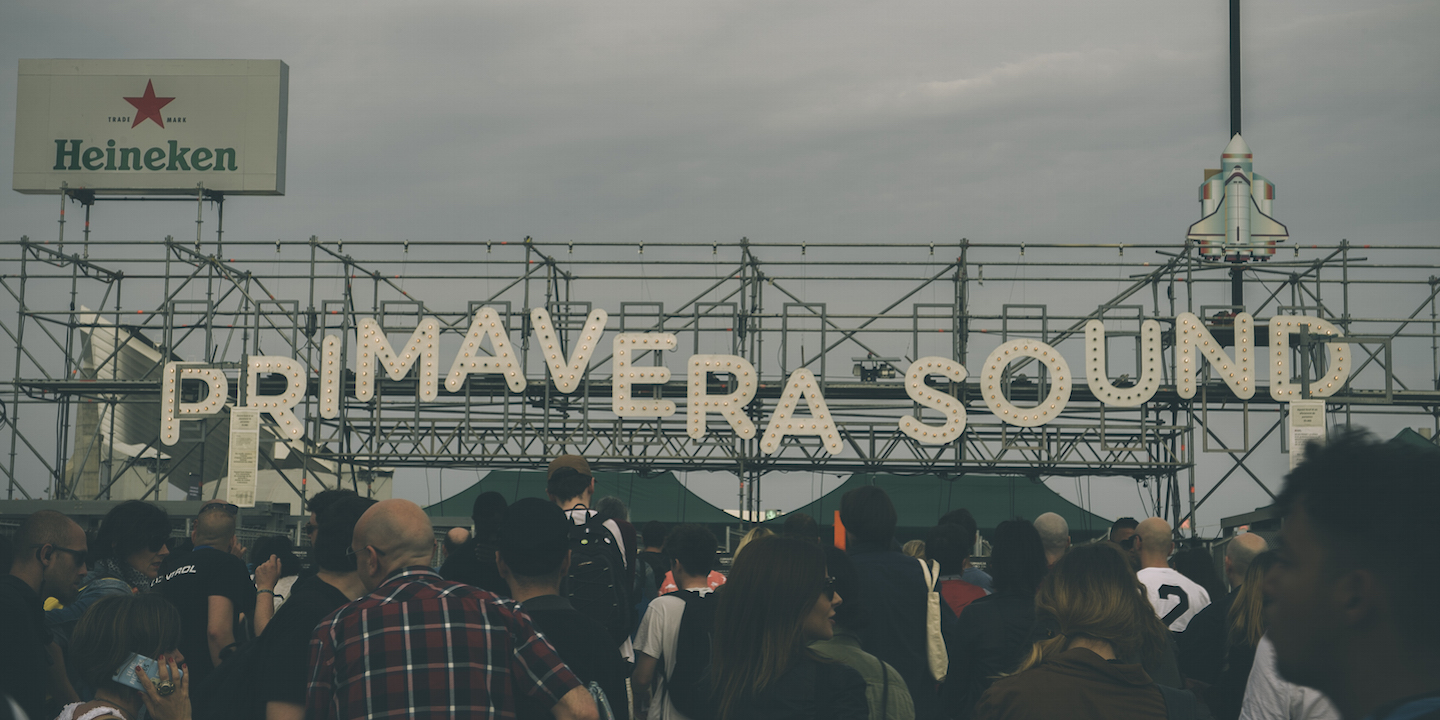
TK
Interview: Maxwell: Hostage of Love

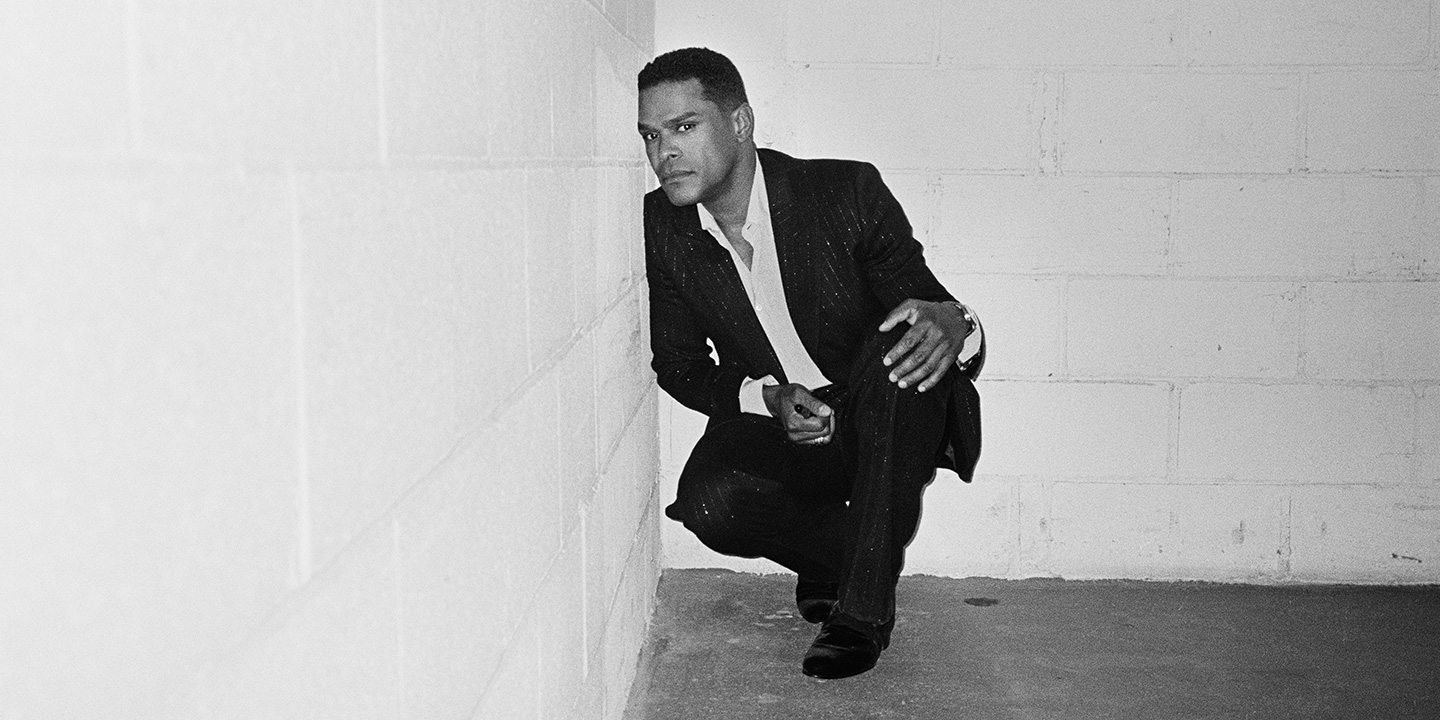
On his very first album, Maxwell was not afraid to pop the question. “Will you marry me?” he purred near the end of Maxwell’s Urban Hang Suite, his star-making 1996 debut. Back then, he was in his early 20s, making music that grooved with frictionless precision while calling back to an earlier era of tasteful sensuality. On its surface, Urban Hang Suite sounded like idealized romance, a dream first date—but even that proposal track came with a disclaimer. “I never thought myself the… kinda man that would ever wanna settle down,” he sang, spiking his own fantasy with a dose of reality. “Statistics say it’s crazy, passion won’t survive.”
Twenty years later, Maxwell is still making love songs, but they’ve grown more complicated, more restless. He knows people come to him for music to get them in the mood, to forget about the petty squabbles and try to realize a companionship that can be everlasting. With this he’s built a remarkably stable brand amid industry turmoil; each of his four albums has gone platinum. But he’s also aware of the irony that he’s never managed to find that eternal kind of love himself. At 43, he’s never been married, and there are moments on his new album, blackSUMMERS’night—the middle chapter of a planned trilogy—when he wrestles with the contradictions that make up his life and art. “I’m confusing at times, sometimes I might lie,” he sings on “Listen Hear,” the record’s confessional closer. “I’m scared and I’m shy/To show you just how weak I am/Because sometimes I am not the kind of man I would like to be.” Co-produced by Maxwell and longtime collaborator Stuart Matthewman of Sade, the song is pure quiet storm, its ominous clouds punctured by twiggy bolts of lightning in the form of an isolated guitar line. The effect is smooth. But it’s uneasy, too.
Sitting on the roof of Manhattan’s Soho House in the middle of May, the sky is clear, with all of downtown underneath it. The scene is idyllic, almost to the point of parody, with the upper-crust creatives that make up the members-only club’s clientele lounging next to a heated pool on a Thursday afternoon as the bustle of 14th Street teems below. The Soho House is the type of place with its own set of rules—cameras, cell-phone conversations, and “overtly corporate attire” are prohibited—all of which encourage a sense of laid-back elegance. There are model types with small dogs getting some sun. There are British DJs making a pit stop before their next yacht gig. There is Maxwell, a guy who has performed for President Obama often enough to lose count. (“Four or five times,” he guesses.)
Wearing a green camo zip-up, shorts, and Ray Bans, he doesn’t look out-of-place. He smiles easily. He’s animated, loose. He likes it here. It’s close to his home, and he knows the owner. He was here on April 21, when Prince died. “It was a beautiful day, and then my mood was just fucked,” he recalls between bites of a veggie burger, his voice as gritty as his falsetto is sleek. “My friends here were trying to cut deals about stuff, and I was like, ‘Guys, you know Prince just died, right? I think it’s time to start playing some Prince music, maybe? Because he just died.’” Prince was played well into the night.
The rooftop is only about 12 miles and a bridge or tunnel away from the notoriously tough Brooklyn neighborhood of East New York, where Maxwell grew up in the notoriously tough ’70s and ’80s, but it feels like a universe away. The child of a teenage Haitian mother and a markedly older Puerto Rican father, who wasn’t in the picture, the singer has always been self-conscious about the less-than-ideal circumstances surrounding his birth. “It wasn’t a planned pregnancy,” he once said, and his parents’ strict religious families didn’t approve of the cross-cultural nature of their relationship, either. “There was shame in having me.”
The odd-man-out mentality that defined his youth attracted him to similarly unique characters, and it’s also imbued him with a fierce loyalty along with a wariness of outsiders. His closest musical collaborator, songwriter, producer, and multi-instrumentalist Hod David, spent part of his early life as one of Texas’ few Israeli Jews. The two originally bonded in the years leading up to Urban Hang Suite, when they were busboys in New York, and they’ve stuck together since; David co-wrote and co-produced the lion’s share of blackSUMMERS’night alongside his lifelong friend. Manager John Dee Hammond, the grandson of legendary record man John Henry Hammond—who guided the careers of artists including Billie Holiday, Bob Dylan, and Aretha Franklin—has also been with Maxwell from the beginning of his career. And during our interview, Hammond protectively sits inches away from us. A friendly dad in a Mets cap who looks decidedly dressed down amid the club’s fashionistas, Hammond seems like he’s trying not to monitor our chat too closely, but Maxwell still defers to him here and there.
Reflecting on the friends and creative partners he’s had since his start in the music industry, Maxwell tells me, “My darker, humbler beginnings were like a magnet that brought me so much—I was lucky to find a family in my business that I didn’t have in my home.” It’s an optimistic twist on the typical tortured artist’s tale. Family is family; love is love. To really feel it is to know what it means to be without.
Pitchfork: Fifteen years ago, you said that, because of your upbringing, you never thought you could deserve a family of your own. Do you still feel that way?
Maxwell: I’m a little bit more confident now. I’m older and I have a lot of things that I really want to clarify about why everything was so secretive and bizarre with my life, just things I was ashamed of that I shouldn’t have been ashamed of. Because the circumstances of my life—my mother’s origin, my father’s origin, how she was 16 when she had me and he was much older, being shipped off here—I didn’t want people to feel sorry for me. I felt transformed through this music thing. It was like I finally felt good about myself. That’s why I didn’t really connect myself with the energy people gave me onstage back then. It was like, This is happening... but, really? Because most people grow up with parents and family that really love them and nurture them to the point where they believe the world revolves around them. I didn’t really have that.
But I have great forgiveness and love for my mother, because she had that life. I recently went to Haiti and saw stuff that made me go, “Oh OK, this is what it was like for her.” It changed my whole outlook—and then I ended up finishing the record. It was so cosmic. It was like this weight off my shoulder. I didn’t attach myself to being the kid that was a child of shame anymore. And I have a good relationship with my mom now.
When you decided to be a performer, do you think you were subconsciously looking for the motherly acceptance you didn’t get at home?
All the women did it. It was almost like the universe conspired and said, “We’re going to have all these moms and their grandmoms love you.” It never ultimately compensated for the one that you wanted to love you, but it doesn’t matter because that was just not what was supposed to happen. James Brown didn’t have that; I'm not James Brown by any stretch of the imagination. But I just accept the experience for what it was. The hellish feeling of being a creative person is constantly trying to chase a life that never was supposed to be that way. It happened this way for a reason: to write those songs, to create that sense of humility. Most of my contemporaries were very narcissistic, but I never really woke up thinking I was so beautiful and great-looking and all that. I look back [at old videos and photos] now and I'm like, Fuck! Damn, word? But in the moment, I just thought of myself as that guy who had a family situation.
Do you feel like having gone through that dysfunction put you at a disadvantage in terms of marriage and having kids yourself?
Dysfunction is amazing food for music and art. There are the lucky ones who don’t need it, but there’s nothing as pretty as the caged bird that sings, or the prince that's banging his head against the cage that he’s in. That sound rings across the world. People stop and go, “That’s the most beautiful sound ever.” And it’s someone hurting! Go figure.
And though I write about marriage and proposal a lot, but I never saw it work. I mean, I know people who got married, but there’s a lot of shit that goes on. I have a different view of marriage. It’s more of a friendship. It’s a relationship between you and the children you might have. That’s really the bond, because you're going to get taken over by the child. They are going to win. There is no other way around that. I don’t know one married couple that looks at each other and goes, “I love you more than my kid.” There’s no way. Do you have children?
Not yet.
John Dee Hammond [manager]: I have two.
M: His youngest is my godson. When they see me, they go nuts.
JDH: They do. Uncle Max.
M: But next time I have to wear a white suit, don’t bring them.
JDH: They didn’t get nothing on it.
M: They wrinkled my stuff up [on “Colbert”]!
JDH: You looked great.
M: Meeting Stephen Colbert was the best thing that happened in my life. I fucking love him. He was so funny to me when he was on Comedy Central, I would run home to watch.
At this point you’re kind of known for taking your time between albums, but how do you account for the seven years between the last one and this one?
It was a very long, arduous process of me turning 40 and having all this anxiety. My friends are over here having children and now they have different responsibilities towards me. I felt an incredible shift with [longtime collaborator] Hod [David]—not in terms of his work, but he became a father, and there’s just no replacing the feeling that your own child gives you. So those dynamics changed. A lot.
There was a part of me that was trying to suss out how to marry the newer sound and keep the story of the first album going, too. It’s got to be on purpose, but by accident. And I also learned how to let go and make a little mistake and sound a little gruffer, which was exciting. Even when we did “Colbert,” there was a moment where a note was off, and I was actually into it. I go to all these concerts and I know all the Pro Tools work that’s happening, but when that note was off, I was like, This is what we call being human. That said, you also want to be boutique. You want it to be a delicacy.
But your human experience is what allows people to be empathetic to you musically. That’s why everyone’s first album is the shit, because they’ve had all this time to be human. And then, slowly but surely, you become so far removed from the actual human experience, and the records reflect that. I don’t want to be in a place of such comfortability that I don’t have an understanding of how to communicate certain things; I feel like if you’re too settled financially, your music starts to suck. Then artists need help from people who are 17 who are actually living normal lives to bring that energy. I don’t want to be like Michael Jackson and wake up and realize I had no childhood, did nothing, went nowhere—that I wrote and performed, but I didn’t do anything. It’s not natural not to be human.
Do you feel like being able to look back on cautionary tales like Michael makes it easier for an artist of your generation to manage your life and not self-combust?
Well, I mean, it’s always iffy. Great music is not born out of a person who’s had a very nuclear family growing up. Richard Pryor’s story is amazing. James Brown’s story is insane. That’s kind of what you’re signing up for. If your shit is crazy, everyone else gets to have a normal life. You get to bleed for them, and that blood is their wine. It’s unfortunate that that's how it is. Maybe I set myself up for heartbreak, for whatever reason. I’m trying to transition from that. I’ve had enough years of beating myself up and I got a lot of songs to show for it. My whole thing is not about trying to come off as macho and powerful as possible—it’s about vulnerability. And then you can be a voice for someone who isn’t able to express that. But it’s a very weird place to be sometimes. That’s why I like Prince so much. He had his ego for sure, but he could be so delicate and so vulnerable.
My favorite song on the new album is “Hostage,” which puts forth this quietly radical idea about commitment. You sing: “I’m free inside the cage of your heart in gold.” This idea of embracing being a hostage when it comes to love struck me.
That’s where my head is now. I’ve had enough of my crazy days, so I can easily see myself being free in a cage. But I’m a very complicated person. Sometimes I’m like, Why should I get married? Just because it’s supposed to happen at a certain age? And then I get divorced? It’s a different era now, when people want their time more. And it also depends on what kind of family situation you've been brought up in. For me, it’s difficult to find someone who's actually all right with being in the background a little bit, being cool about it—being hot, but cool about it.
That's also what you're saying when you name-check Michelle Obama on the song “III,” right?
Yes: “I just want a Michelle Obama lady/To hold me down when the world’s crazy.” I had to do that, since she’s leaving the office. She's probably had the hardest position, all the opposition and the resistance she's experienced, and having to console Barack during the nights of trying to help get gay rights, stopping the whole gun thing—and then you have Trump over there.
It’s an interesting time.
It’s a sad time. Trump married the seriousness of politics with social media and reality show bullshit. And people are OK with it, because that’s the culture now—until it gets really real when you’re fighting a war again. You would have thought we would have learned our lesson by now.
As a big fan of Marvin Gaye, have you ever considered doing a What’s Going On-type album with more political overtones? Does that appeal to you at all?
It does. I might surprise you on the [next album] with that. I loved Marvin’s approach. It felt like Martin Luther King to me. It was a mirror. It wasn’t militant. It wasn’t like a lecture. It was just: Here’s what’s going on, guys. And I appreciate that. Funny enough, the [upcoming] movie Birth of a Nation[about Nat Turner, who led a slave revolt in 1831] jump started my creative engine a little bit [this time]. I wrote a song for the movie, and it really made me love making music again. I wrote that song from a perspective of trying to show the patriotic connections between us all as Americans. I am not here to create songs about resistance. I want to write songs about unifying people. But at the same time, Hod—my closest collaborator—can agree with the Kendrick Lamar approach as well. You need the best of both worlds. But I’m a love song guy. I can’t come out here talking about “kill the white people” or whatever. I just think that we’re all Americans and we need to concentrate on that fact, because that’s a very powerful thing.
You’ve kept a tight creative circle over the years, but moving forward would you ever consider working with a bigger variety of producers and collaborators?
Look, I’m not just getting every producer that’s written a hit for somebody else. I don’t like to work like that. It feels like a machine. I’ve just worked with my friends; it feels safe. Early on, I worked as a dishwasher. I worked at Pizza Hut. I remember being really sad one day when doing those jobs because I had so much passion for music, so I said to myself in the bathroom: "If I get to make music, I promise I won’t ever do it to make money.” And the universe has sworn me to that, because in the beginning I had a few sketchy demos that were clearly me trying to make a hit record—and they never worked.
Looking back at interviews you did around the first installment of the blacksummers’night trilogy seven years ago, you said you wanted to release a new part of the saga each year—and that didn’t quite work out.
Yeah. But I think it’s a better record because it took the time it took. “Hostage,” for example, was around for four years, but I just didn’t have the thing in me so that could sing it like that; it was not fully there. We chiseled it away. I know I’ve said it before, but the next one will not be a seven-year wait. I can not put a record out when I’m 50 with the same title. I need to move on. I have other things that I want to do: musically, creatively, artistically, film-wise, things that deal with technology, like being able to experience a concert at home. But I don’t want to give all my ideas away.
